Bengali cuisine, renowned for its intricate flavors and diverse dishes, is a culinary treasure trove rooted in the cultural heritage of Bengal, encompassing both West Bengal in India and Bangladesh. Characterized by its emphasis on fresh ingredients, aromatic spices, and seafood delicacies, Bengali cuisine offers a tantalizing array of dishes ranging from fish curries like macher jhol to vegetarian delights like shukto and cholar dal. Staple foods such as rice and various types of bread, including luchi and paratha, accompany meals. Desserts like rasgulla and mishti doi are a sweet finale to a rich culinary experience, celebrating Bengal's culinary legacy.
Bengali Biryani/Kolkata Biryani
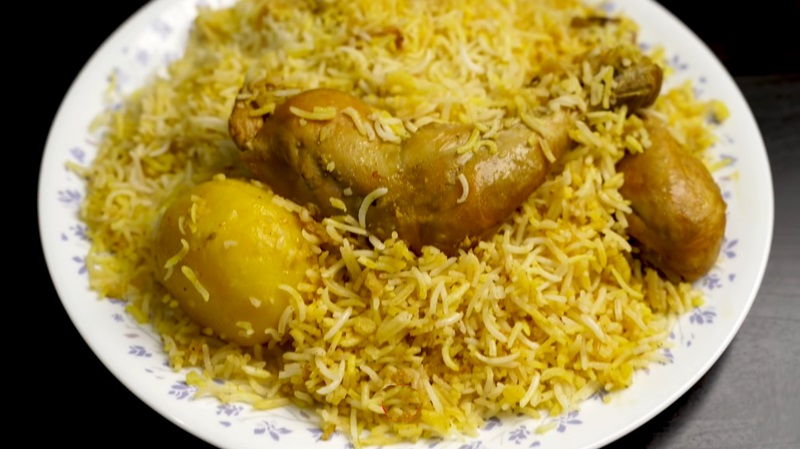
Bengali Biryani, a beloved dish from the eastern region of India, showcases a unique fusion of flavors and aromas. Unlike its counterparts in other parts of India, Bengali Biryani is characterized by its subtle yet complex taste profile. The dish typically features fragrant Basmati rice cooked with tender pieces of meat, often goat or mutton, layered with aromatic spices such as cloves, cinnamon, cardamom, and saffron-infused milk.
What sets Bengali Biryani apart is the addition of potatoes, boiled eggs, and sometimes even fried fish, adding layers of texture and taste to the dish. The use of mustard oil and a touch of sweetness from caramelized onions further enhances its distinct flavor profile. Bengali Biryani is often served with a side of refreshing cucumber and tomato salad, along with a dollop of yogurt or raita to balance the richness of the biryani.
Gulab Jamun
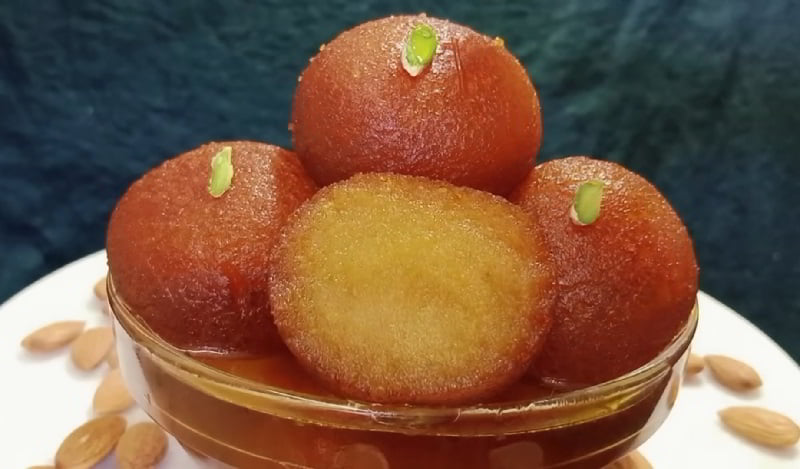
Gulab Jamun, a beloved dessert, holds great significance in cultural and celebratory events. Traditionally made from khoya, which is milk reduced to a soft dough, modern versions may include dried or powdered milk. This iconic sweet is adorned with dried nuts and undergoes a meticulous process. Milk solids obtained from simmering milk are mixed with flour, shaped into small balls, and then deep-fried. These balls are then soaked in a fragrant sugar syrup. The end result is a delightful delicacy infused with the flavors of cardamom and rose water. Gulab Jamun pairs wonderfully with vanilla ice cream or kulfi, making it a popular choice for festivals, birthdays, and special occasions. With its various adaptations, Gulab Jamun continues to be a symbol of sweetness and joy in cultural celebrations.
Panipuri
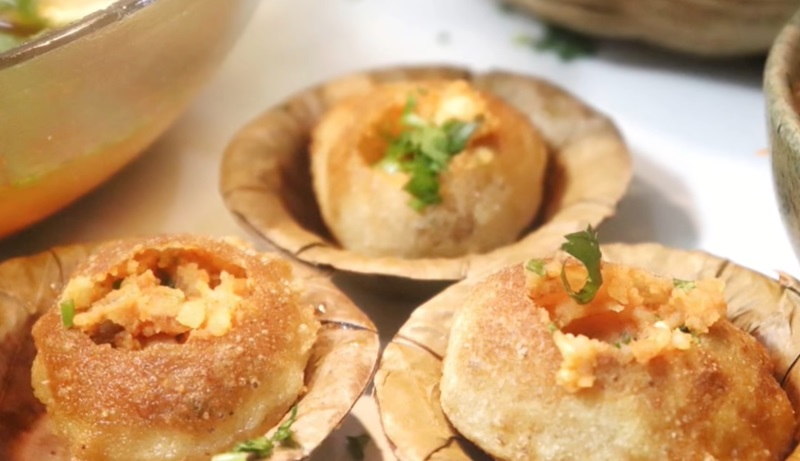
Panipuri, also known as phuchka or golgappa, is a beloved street food in Bengal. This delightful dish features small, crispy puris that are hollow on the inside and filled with a tantalizing mixture of tangy and spicy ingredients. The puris themselves are made by combining semolina, wheat flour, and water, which are then rolled out and deep-fried until they turn light and crunchy. As for the filling, it typically consists of mashed potatoes, chickpeas, chopped onions, and a blend of spices like cumin, chaat masala, and tamarind chutney. To complement these flavors, panipuri is served with a refreshing and flavorful mint-coriander water known as pani. The pani is made by blending mint leaves, coriander leaves, green chilies, ginger, and other spices. To enjoy panipuri, one simply takes a puri, creates a small hole on top, fills it with the spicy filling, and then dips it into the pani before eating it in one bite. This results in an explosion of flavors, with the crispy puri, spicy filling, and tangy pani coming together to create a harmonious and satisfying taste experience.
Laddu

Laddu, a beloved round sweet originating from the Indian subcontinent, is a testament to the region's rich culinary heritage. Known as one of the oldest and most widely enjoyed Indian desserts, laddus are skillfully made by combining various ingredients with sugar syrup or jaggery. These delightful treats have become an essential part of cultural and religious celebrations, especially those honoring the revered Hindu deity Ganesha.
The diversity of laddus is exemplified by the different regional variations, each offering its own distinct flavor. Whether it's the besan laddu made with chickpea flour, the royal shahi laddu, the coconut-infused delight, or the small, bead-like motichoor laddu, these variations contribute to the vast array of Indian sweets. Laddus, with their round shape, symbolize happiness and are commonly seen during auspicious occasions, joyful festivities, and sacred rituals.
As laddus grace the tables of households and temples alike, their significance goes beyond culinary pleasure. They embody cultural traditions and serve as sweet ambassadors of celebration and devotion throughout the Indian subcontinent.
Haleem
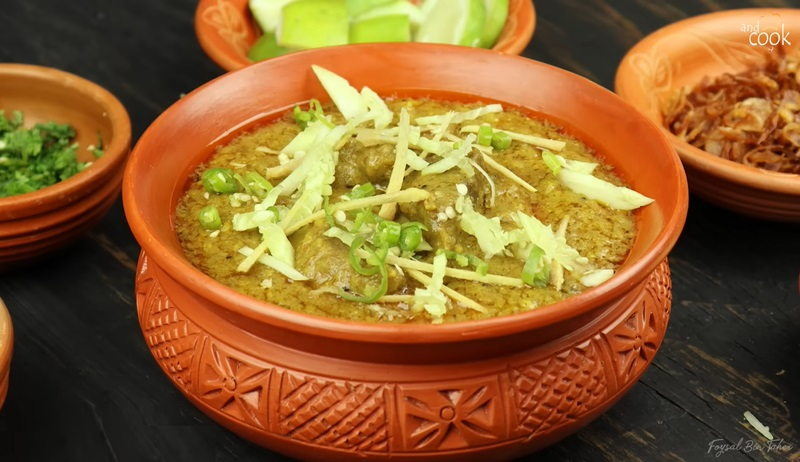
Haleem is a hearty meat stew boasts a delightful combination of lentils, wheat, and an array of spices, resulting in a rich and flavorful experience. The dish requires several hours of slow cooking, allowing the ingredients to meld together beautifully, resulting in a lusciously thick and creamy consistency. To prepare haleem, tender meat, typically beef or mutton, is simmered with a medley of lentils, wheat, and an enticing blend of ginger, garlic, cinnamon, cardamom, and cloves. As the meat slowly cooks, it becomes irresistibly tender, effortlessly separating into succulent shreds. Meanwhile, the lentils and wheat break down, adding thickness and texture to the stew. The end result is a dish that is both aromatic and creamy, boasting a unique and delightful mouthfeel. As a finishing touch, haleem is often garnished with crispy fried onions, vibrant coriander leaves, and a zesty squeeze of lemon juice, adding a refreshing element that beautifully complements the robust flavors. Haleem is commonly enjoyed alongside fluffy naan bread or fragrant rice, creating a hearty and satisfying meal. Not only is this dish undeniably delicious, but it is also incredibly nutritious, packed with high-quality proteins from the meat and lentils, as well as fiber from the wheat. Haleem is cherished by individuals of all ages, but it truly shines during the holy month of Ramadan, where it often takes center stage as a special dish for iftar, the meal that breaks the day-long fast.
Rasgulla
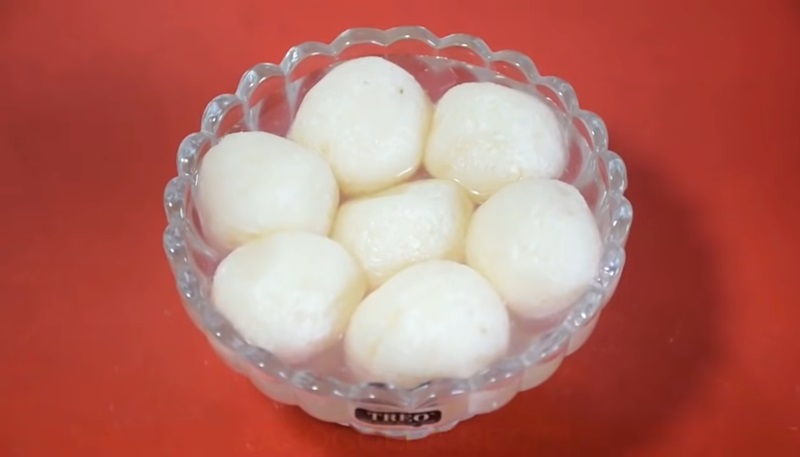
Rasgulla is a popular and traditional Bengali sweet dish that has gained widespread popularity across India and even internationally. It is a soft and spongy ball-shaped dessert made primarily from milk and sugar. The process of making rasgulla involves curdling milk to form paneer or cottage cheese, which is then kneaded and shaped into small balls. These balls are then cooked in a sugar syrup flavored with cardamom or rose water until they become light and fluffy. Rasgulla is known for its delicate texture and sweet, milky taste. It is often served chilled and can be enjoyed on its own or as a refreshing addition to a meal. Apart from being a beloved dessert, rasgulla is also considered an auspicious sweet and is often offered as a prasad (offering) in religious ceremonies. Bengali cuisine is renowned for its sweet delicacies, and rasgulla is one of its most iconic creations. Whether enjoyed during festive occasions or as a simple indulgence, rasgulla continues to be a favorite among people of all ages, making it a truly treasured dish in the Bengali cuisine.
Korma
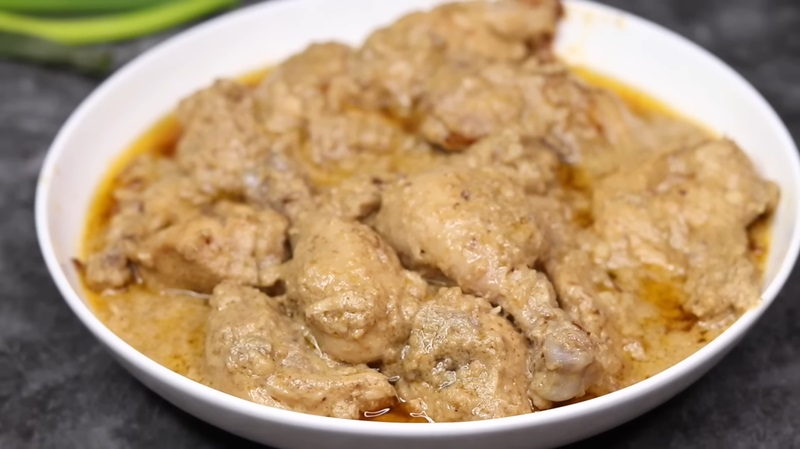
Korma, originating from the opulent Mughlai cuisine of the Indian subcontinent, has its roots firmly in the grandeur of the 16th century when the Mughals expanded into South Asia. This dish, which was highly regarded in the Mughal courts, includes the famous white korma, believed to have been served at the inauguration of the Taj Mahal to Shah Jahan and his esteemed guests, possibly adorned with vark.
A korma is a culinary marvel where meat or vegetables are slowly braised with yogurt or stock. This technique is seen in various korma styles. The flavor profile is intricately woven with spices like ground coriander and cumin, carefully combined with yogurt to prevent curdling. Traditionally, this meticulous process took place in a pot over a gentle flame, often with charcoal on the lid for even heat distribution. Korma, whether delicately spiced or boldly fiery, offers a range of meat options like lamb, goat, chicken, beef, or game, with some variations also including a mix of vegetables like spinach and turnip. The term "shahi," associated with certain kormas, signifies its prestigious status, representing a gourmet delight reserved for special occasions and courtly indulgences.
Whether enjoyed with fragrant basmati rice or accompanied by naan bread, Chicken Korma allows diners to relish the harmonious symphony of flavors in this timeless dish, serving as a cherished ambassador of Indian culinary heritage.
Ras Malai
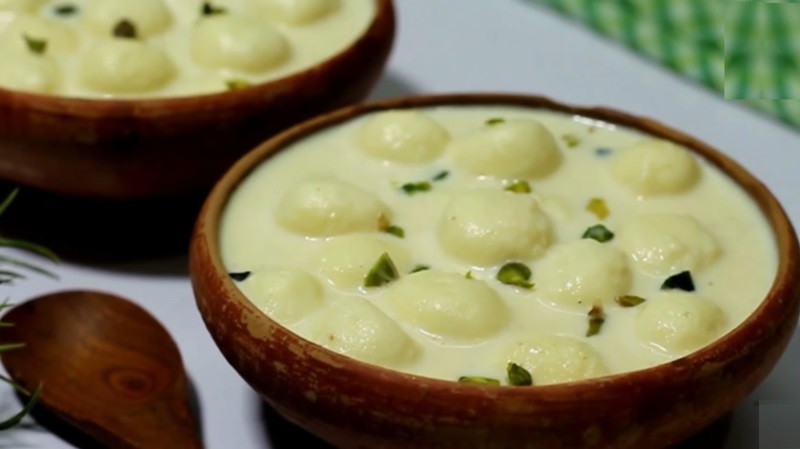
Ras malai, a delicious dessert originally from the Indian subcontinent, is known by different names such as ras malai in Hindi, roshmalai/rosmalai in Bengali, and rasa malei in Odia. This delightful sweet is loved in India, Bangladesh, and Pakistan for its rich and enticing flavors.
To make ras malai, chhena is first shaped into balls and then soaked in malai, a creamy clotted cream infused with the aromatic essence of cardamom. The process involves boiling milk, adding a touch of vinegar or lime juice to curdle it, and removing the whey. The resulting milk solids are then kneaded into a dough, formed into small balls, and cooked in hot water with a hint of rose water.
These soft balls are then immersed in a milk mixture that includes saffron, pistachios, and kheer as a stuffing, creating a delightful combination of flavors and textures. Ras malai represents the culinary artistry of the Indian subcontinent and provides a heavenly experience for those who savor its creamy, fragrant, and decadent allure.
Kheer
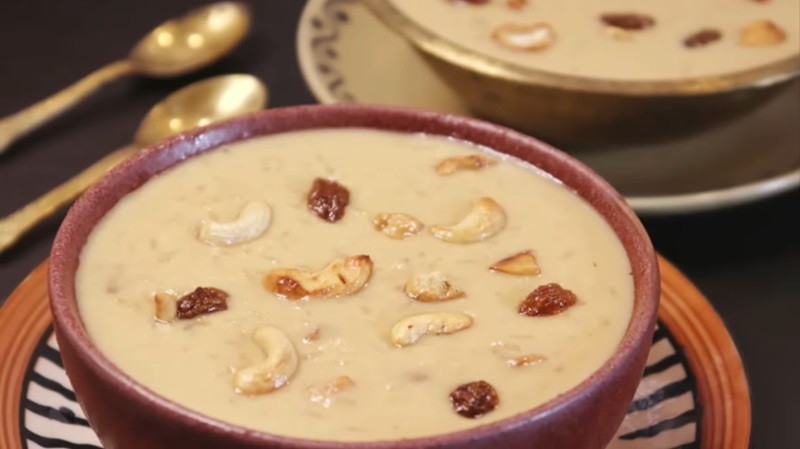
Kheer is a beloved dessert that holds a special place in various cultural and festive celebrations. It is commonly prepared during festivals, weddings, and other special occasions. This rice pudding is made by slow-cooking rice in milk and sweetening it with sugar. The addition of aromatic spices like cardamom and garnishing with nuts such as almonds and pistachios give kheer its rich and creamy texture.
Kheer's versatility is evident in variations like sabudana kheer and vermicelli kheer, which showcase regional adaptations. Through the process of simmering, the rice absorbs the essence of the milk, resulting in a delightful harmony of flavors. Whether served warm or chilled, kheer symbolizes warmth, tradition, and the sweet moments shared with loved ones. It has become a timeless and comforting dessert in the culinary tapestry of South Asia.
Falooda
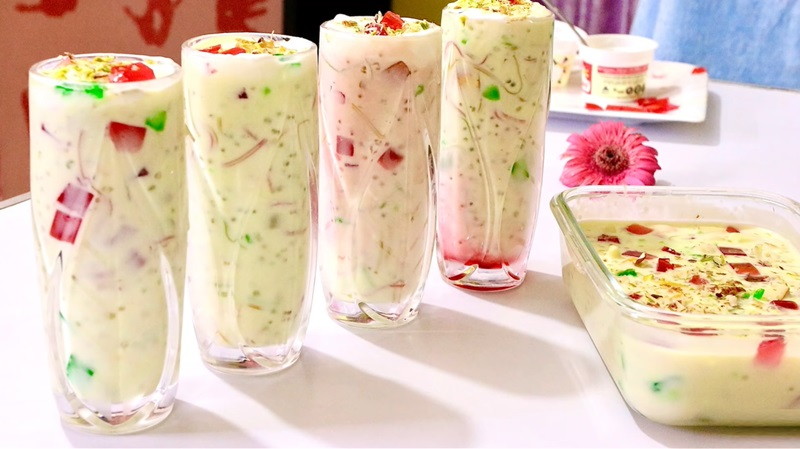
Falooda, a beloved dessert in Mughlai cuisine, is a cold treat that traces its origins back to the Persian dish faloodeh. This delightful dessert has gained popularity across West, Central, and South Asia. It features vermicelli combined with rose syrup and sweet basil seeds, all harmoniously blended into milk and topped with a scoop of ice cream. The vermicelli, made from wheat, cornstarch, arrowroot, or sago, serves as the delicate base for this culinary masterpiece.
Having ancient roots, falooda surpasses boundaries, offering a delightful combination of textures and flavors. The infusion of rose adds a sweet touch, while the chewiness of basil seeds and the coolness of ice cream create a sensory experience that has endured over time. Whether enjoyed on warm afternoons or shared during festive gatherings, falooda remains a treasured delicacy, embodying the diverse culinary heritage it has inherited from various cultures and regions.
Barfi
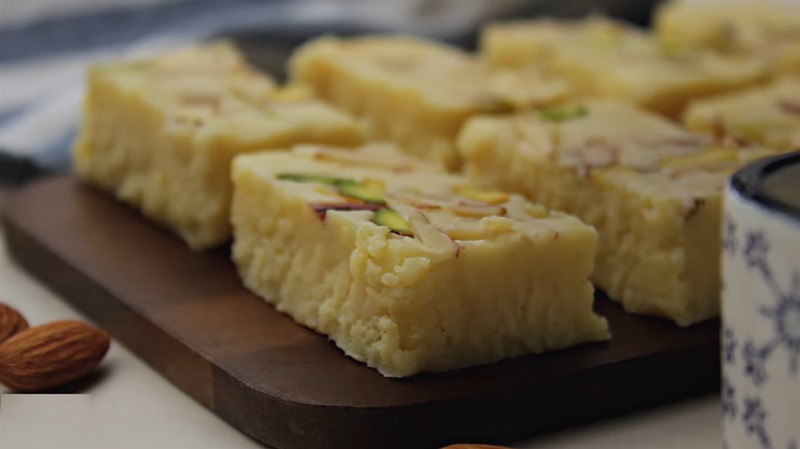
Barfi, a delightful confection made from milk with a fudge-like texture, has its origins in the Persian and Urdu word "barf," which means snow. This beloved sweet is closely associated with joyous occasions and festivals such as Diwali and Holi, and has become an integral part of the culinary heritage of the Indian subcontinent, especially in North India. Introduced by the Mughal Empire during the 16th century, barfi has embarked on a historic journey, captivating people's palates and becoming an essential element of cultural celebrations.
With its luscious and creamy texture, barfi showcases the mastery of milk-based sweets. Often adorned with nuts and fragrant spices like cardamom, this treat represents a perfect fusion of tradition and innovation. From its Persian roots to its global influence, barfi continues to captivate taste buds and remains a cherished symbol of sweetness in various corners of the world.
Chicken Curry
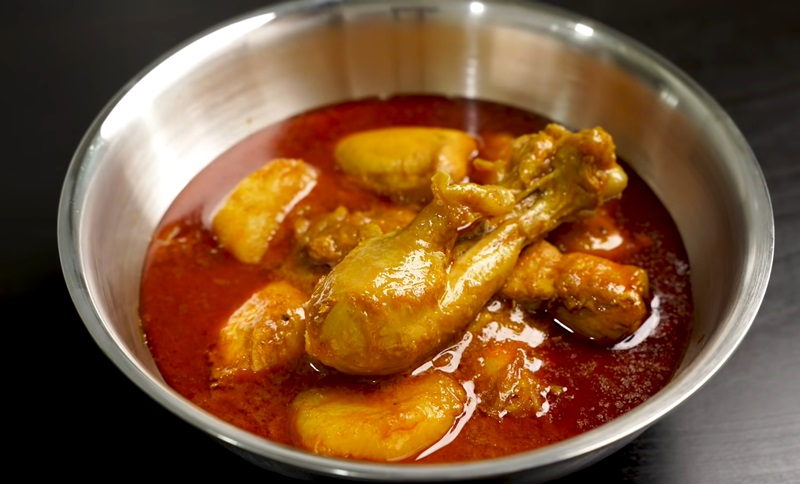
Chicken curry, a beloved dish worldwide, is known for its delightful flavors and enticing aroma. Originating from the Indian subcontinent, it has become a staple in Indian cuisine, renowned for its rich and intricate taste. Throughout its history, chicken curry has undergone various regional adaptations, resulting in unique and diverse variations.
The preparation of this dish involves marinating chicken pieces in a harmonious blend of spices, including cumin, coriander, turmeric, and chili powder. The marinated meat is then gently simmered in a fragrant sauce made from a combination of tomatoes, onions, garlic, and ginger. To enhance its distinct character, coconut milk, yogurt, or other regional ingredients are often added.
As time has passed, chicken curry has gained popularity on a global scale, with each culture infusing its own twist into the recipe. From the fiery vindaloo of Goa to the coconut-infused curries of Southeast Asia and the aromatic spice blends of the Caribbean, chicken curry exemplifies the art of culinary fusion. It serves as a testament to the universal pleasure of indulging in a delicious and comforting meal.
Chicken Tikka
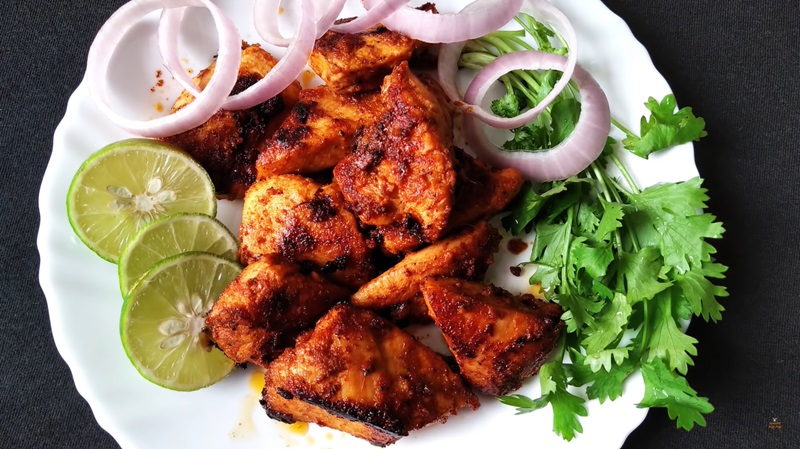
Chicken tikka is a beloved dish in South Asian cuisine, praised for its delectable flavors and tender chicken. To prepare this dish, boneless chicken chunks are marinated in a mixture of yogurt and spices, resulting in a delightful blend of richness and tanginess. The marinated chicken is then grilled or baked until it reaches the perfect level of doneness, acquiring a slightly charred outer layer. The marinade for chicken tikka typically incorporates a combination of spices like cumin, coriander, turmeric, paprika, and garam masala, resulting in a robust and aromatic taste that is both savory and mildly spicy. The inclusion of yogurt in the marinade also contributes to the chicken's tenderness, yielding a moist and succulent texture. Chicken tikka is commonly served as an appetizer or as part of a main course, and it can be enjoyed on its own or complemented with various condiments such as mint chutney or tamarind sauce.
Kachori
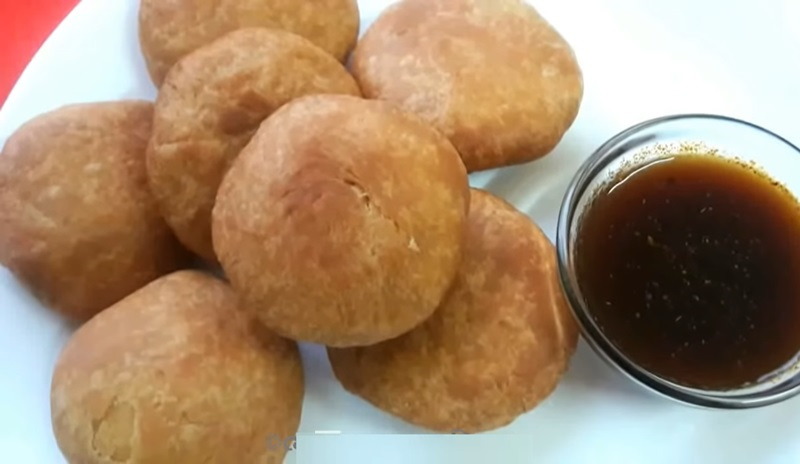
In West Bengal, the kachori, locally pronounced as kochuri, takes on distinct variations. Here, it is softer and smaller, primarily made from white flour (maida) and asafoetida (hing), which is added to enhance its flavor. This delicacy is commonly enjoyed as a tea-time snack, paired with potato-peas curry and Bengali sweets. During winter, a popular variation called koraishuti kochuri, stuffed with peas, becomes a seasonal delicacy. Sweet shops offer another variant known as 'Khasta Kochuri', resembling the harder form found in Delhi and filled with masala. Unlike the traditional kachori, the khasta kochuri is typically enjoyed without any accompanying curry.
Gur Badam
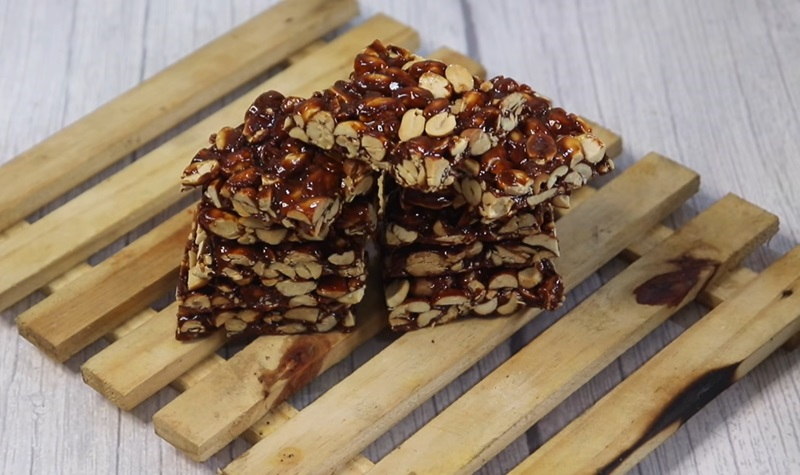
Bengali cuisine is known for its rich and diverse flavors, and one such popular item is Gur Badam. It is made from a combination of jaggery, peanuts, and sesame seeds. The jaggery is melted and mixed with roasted peanuts and sesame seeds, creating a sticky and crunchy texture. The mixture is then poured onto a greased surface and flattened to form thin sheets. Once cooled, the sheets are broken into bite-sized pieces. The combination of jaggery, peanuts, and sesame seeds gives Gur Badam a unique and satisfying taste. The sweetness of the jaggery perfectly balances the nutty flavor of the peanuts and the slight bitterness of the sesame seeds. The crunchiness of the nuts and seeds adds a delightful texture to the dish. Gur Badam is often enjoyed as a snack or dessert.
Jalfrezi
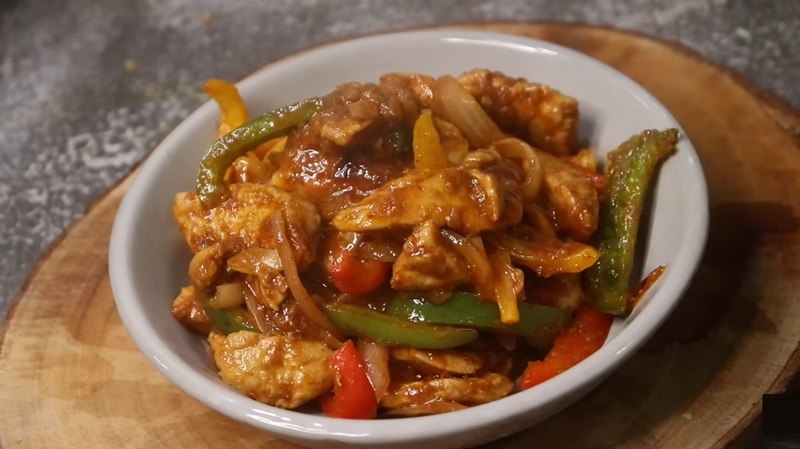
Jalfrezi is a dynamic Indian dish that has a fascinating history. It originated during the British Raj era as a way to use up leftover stir-fried ingredients. The name itself comes from the Bengali words for spicy and fry, reflecting its flavorful nature. This curry combines Indian and British culinary influences, resulting in a unique and delicious combination.
To prepare Jalfrezi, marinated pieces of meat, often chicken or lamb, are stir-fried with a colorful mix of vegetables like bell peppers, onions, and tomatoes. The dish is enhanced with a blend of spices such as cumin, coriander, turmeric, and chili, creating a bold and aromatic flavor. Some versions also include ginger, garlic, and garam masala for added depth.
What sets Jalfrezi apart is its spicy and tangy character, showcasing the versatility of Indian cuisine. It is typically served with rice or Indian bread, and has gained popularity worldwide for its fusion of culinary traditions. With its vibrant colors, bold flavors, and perfect balance of heat and tang, Jalfrezi is a must-try for anyone looking for an authentic and delicious Indian curry experience.
Pitha
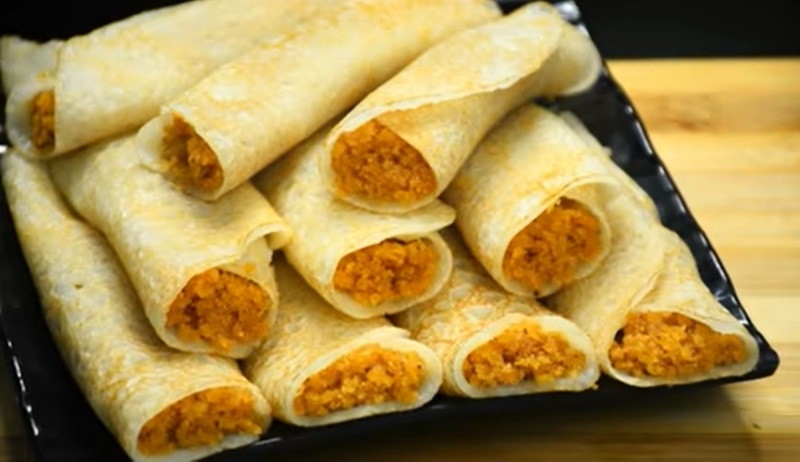
Pitha holds a special place in the culinary traditions of Northeast India. This versatile and delicious dish is typically enjoyed during festivals and special events. Pithas are made from rice flour and can be either pancakes or dumplings. They are prepared using various ingredients and cooking methods. The main components include rice flour, jaggery (unrefined sugar), coconut, and sometimes lentils. The dough is made by mixing rice flour with water and then shaped into different forms such as dumplings, pancakes, or stuffed pockets. These are then steamed, grilled, or fried, depending on the type of pitha being made. Pithas can have sweet or savory flavors. Sweet pithas are often filled with a delightful combination of grated coconut, jaggery, and cardamom. Savory pithas, on the other hand, may contain spiced lentils or vegetables for a satisfying taste. Not only are pithas delicious, but they are also visually appealing with their various shapes and sizes. They are commonly served as snacks or desserts and enjoyed alongside a cup of tea or milk. Pitha represents the rich culinary heritage of Northeast India and is a cherished dish that brings people together during festive occasions.
Sandesh
-1708526621.jpg)
Sandesh, a beloved dessert originating from the Bengal region in the eastern part of the Indian subcontinent, is a delightful creation made with the simple yet exquisite combination of milk and sugar. This traditional sweet captures the essence of Bengali culinary heritage, offering a taste that reflects the region's affinity for milk-based delicacies.
While some recipes use chhena or paneer as an alternative to milk, the variety in preparation methods adds to the charm of Sandesh. In the Dhaka region, a variant called pranahara emerges, showcasing a softer texture achieved through the use of mawa and yogurt in the recipe. This creative adaptation highlights the regional nuances that enrich the world of Indian sweets.
An interesting aspect of Sandesh's history is the Gupo/Gufo style from Guptipara, considered by some as the first branded sweet of Bengal. This recognition adds a layer of cultural significance, emphasizing the dessert's deep-rooted connection to the region's culinary evolution. With its smooth texture and subtle sweetness, Sandesh remains a symbol of Bengali culinary expertise, inviting connoisseurs to savor the authenticity and tradition embedded in every bite.
Dal Bhat
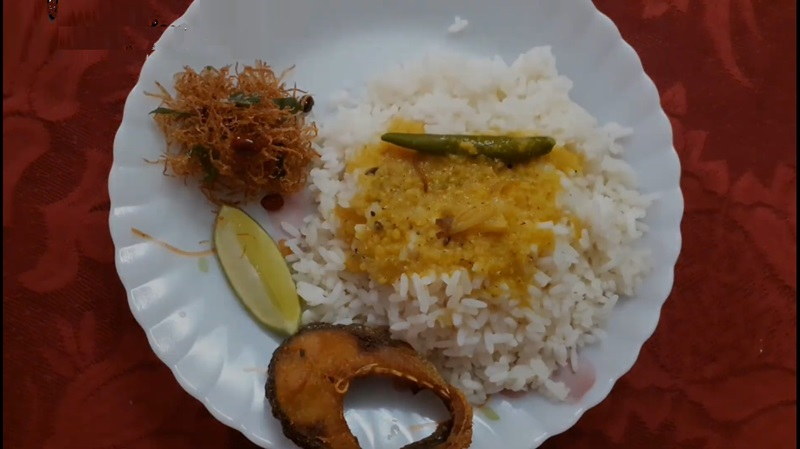
Dal bhat consists of two main components - dal, which is a lentil stew, and bhat, which is steamed rice. The dish is often accompanied by various side dishes and condiments. To prepare dal bhat, lentils are cooked with spices such as turmeric, cumin, and ginger, resulting in a flavorful and comforting stew. The lentils used can vary, with popular choices being red lentils, yellow lentils, or split peas. The dal is typically cooked until it becomes thick and creamy. The bhat, or rice, is cooked separately and served alongside the dal. It is usually steamed and fluffy, acting as a neutral base for the flavorful lentil stew. Dal bhat is often served with a variety of side dishes, such as vegetable curries, pickles, chutneys, and papad. These add different textures and flavors to the meal, enhancing the overall dining experience. This dish is not only delicious but also provides a balanced and nutritious meal. The combination of lentils and rice offers a good source of protein, carbohydrates, and essential nutrients.
Dahi Vada
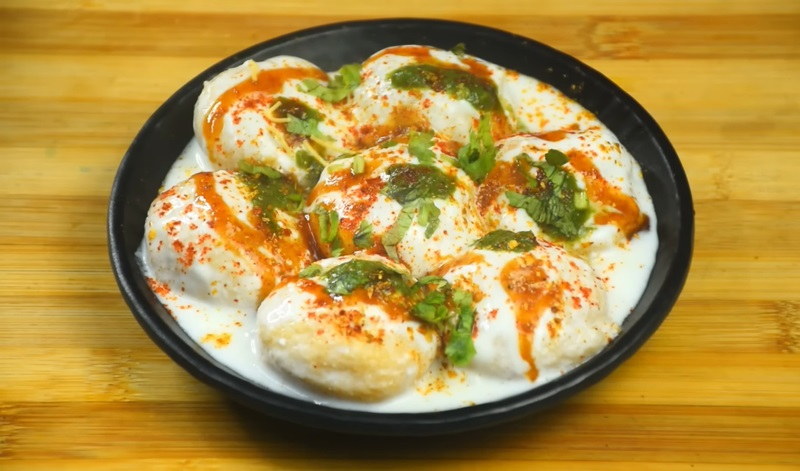
Dahi Vada, an appetizing chaat that originated from the Indian subcontinent, is a culinary marvel that tantalizes the palate. This delectable snack consists of vadas, lentil balls that are fried to perfection and then soaked in thick yogurt, known as dahi. The vadas, crafted from a blend of lentils, are skillfully fried until they acquire a crispy exterior, providing a delightful contrast to their soft and spongy interior. Once fried to perfection, the vadas are immersed in a creamy and flavorsome yogurt, infusing the dish with a tangy and indulgent taste.
The meticulous presentation of Dahi Vada transforms this snack into a harmonious fusion of textures and flavors, making it a beloved dish throughout the subcontinent. To enhance the sensory experience, the dish is often adorned with an assortment of spices like cumin, chili powder, and chaat masala, creating a symphony of flavors that elevates Dahi Vada to a beloved culinary masterpiece.
Bakarkhani

Bakarkhani is a popular flatbread renowned for its unique texture and flavor. The dough is created using flour, milk, ghee, sugar, salt, and yeast, which is then allowed to rise for a few hours. After the dough has risen, it is divided into small portions and rolled out into thin discs. These discs are generously brushed with ghee and folded into layers, resulting in a flaky texture. To achieve a golden brown color and a slightly crispy exterior, Bakarkhani is traditionally baked in a clay oven or tandoor. The end product is a deliciously rich and subtly sweet bread, often enjoyed alongside spicy curries or as a standalone snack.
Malpua
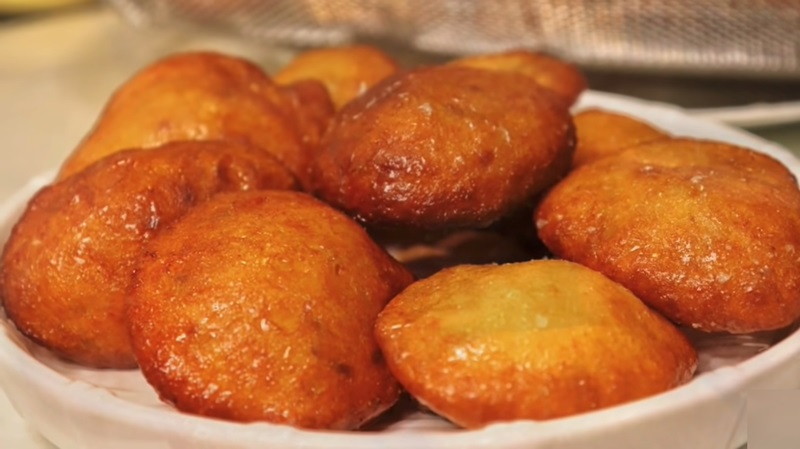
Malpua is a traditional dessert that is immensely popular in the Bengali cuisine. Made from a batter of flour, semolina, mashed bananas, and milk, it is deep-fried until golden brown and then soaked in a sugar syrup. The dish is known for its rich and sweet flavor, making it a favorite during festivals and special occasions. Sometimes, the use of mashed bananas in the batter adds a unique and delightful taste. The batter is further enhanced with cardamom powder and sometimes even fennel seeds, giving it a distinct aromatic essence. The deep-frying process results in a crispy outer layer, while the sugar syrup ensures a moist and syrupy texture. Malpua is often garnished with chopped nuts like almonds and pistachios, adding a delightful crunch to each bite. It is typically served warm and can be enjoyed on its own or paired with a dollop of fresh cream.
Shami Kebab

Shami kebab is a popular dish, known for its rich flavors and succulent texture. It is a type of kebab made with minced meat, typically lamb or beef, mixed with a blend of aromatic spices and lentils. The meat is cooked until tender and then finely ground to create a smooth mixture. To prepare Shami kebab, the minced meat is combined with cooked lentils, onions, ginger, garlic, green chilies, and a variety of aromatic spices such as cumin, coriander, cardamom, and cloves. This mixture is then shaped into small patties and shallow-fried until golden brown. The lentils not only enhance the flavor of the kebab but also give it a soft and melt-in-your-mouth texture. Shami kebab is usually served as a starter or appetizer, accompanied by mint chutney or yogurt dip. The dish is a perfect blend of meaty and spicy flavors, making it a favorite among meat lovers. It is also a great option for those who prefer a protein-rich and flavorful dish.
Mutton Curry/Kosha Mangsho
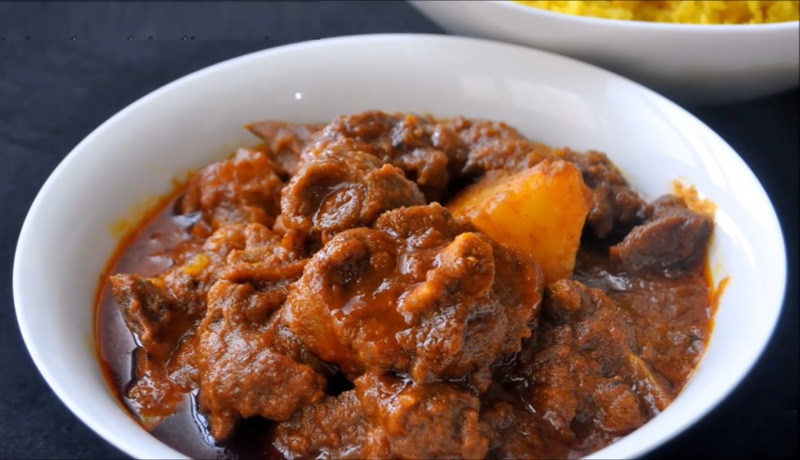
Kosha Mangsho, a quintessential Bengali dish, features tender pieces of slow-cooked mutton or goat meat in a rich and flavorful gravy. Infused with a blend of aromatic spices, including cinnamon, cardamom, and cloves, this dish boasts a deep, caramelized flavor profile. Traditionally served with steamed rice or fluffy parathas, Kosha Mangsho is a beloved delicacy.
Kosha Mangsho, the Bengali rendition of mutton curry, distinguishes itself with a thicker gravy compared to other regional variations. Prepared in the traditional "kosha" style, it involves slow cooking and sautéing to preserve the mutton's flavor and moisture. This dish is a staple during Kali Puja festivities, honoring the Hindu goddess Kali on the New Moon day of the Kartik month.
Chomchom
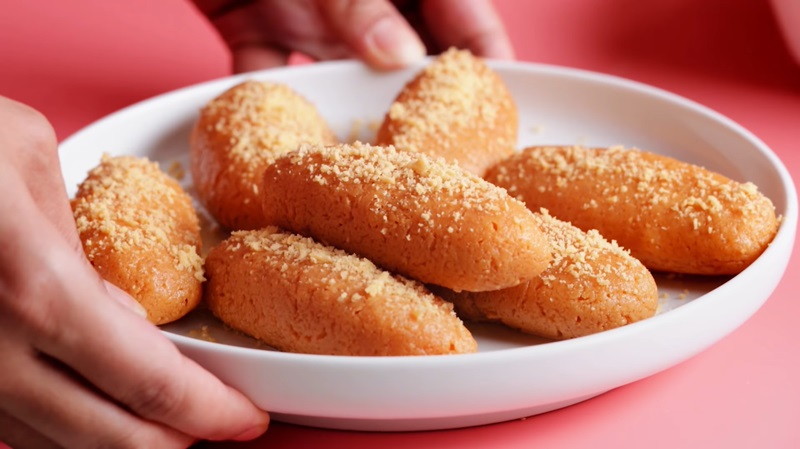
Cham Cham, also referred to as Chomchom or Chum Chum, is a well-loved sweet from Bengal that has gained popularity throughout the Indian subcontinent. This oval-shaped delicacy comes in delightful colors such as light pink, light yellow, and white, often adorned with coconut or mawa flakes to enhance its texture and flavor. Its origins can be traced back to the Tangail District in Bangladesh during the mid-19th century, with a specific variety called Chamcham originating from Porabari, Tangail. The unique taste of Porabari Chamcham is often attributed to the local water quality.
One renowned version of Cham Cham is Maowar Chomchom, which is prepared by Jagadish Mishtanno Bhandar in Khustia District. Cham Cham is cherished during cultural festivities like Durga Puja, Eid Al Adha, Eid Al Fitr, Pohela Boishak (the Bengali new year), and Ashura, as it encapsulates the spirit of joyous occasions. Its soft and luscious texture, combined with its diverse colors and garnishes, not only make Cham Cham a delightful treat but also a symbol of cultural celebrations and culinary artistry.
Baingan Bharta
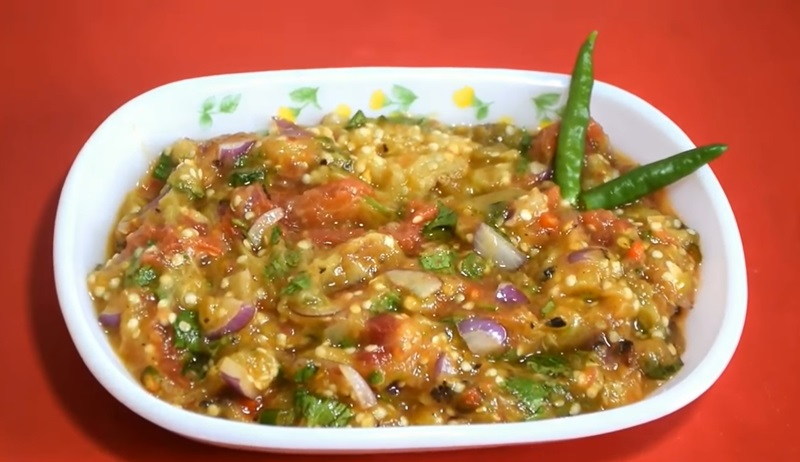
Baingan Bharta is a culinary treasure in Indian cuisine, showcasing the irresistible smokiness of grilled eggplant (baigan) blended with a medley of spices and aromatics. The journey begins by charring the eggplant over charcoal or direct fire, infusing it with a distinct smoky flavor that enhances the dish. Once perfectly grilled, the eggplant transforms into a velvety mash. This smoky, mashed eggplant becomes the foundation for a symphony of flavors, with caramelized onions, diced tomatoes, ginger, cumin, garlic, chili pepper, and fresh cilantro taking the spotlight. To bring it all together, mustard oil or a neutral vegetable oil adds richness to every bite.
Baingan Bharta is a versatile dish that pairs harmoniously with flatbreads like roti or paratha. It also complements rice or raita, a refreshing yogurt salad. Beyond its savory complexity, Baingan Bharta has the power to unite people, creating a shared experience at the dining table.
Boondi
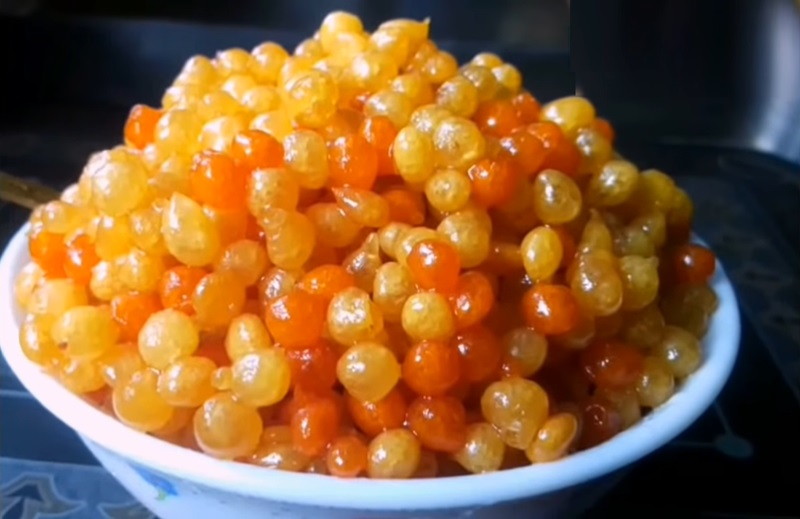
Boondi is a popular dessert made from a batter of gram flour that is mixed with water and fried into small, round droplets called boondis. These boondis are then soaked in a sugar syrup infused with cardamom and saffron, resulting in a delightful sweet and aromatic flavor. Boondi is often served as a dessert during festivals and special occasions, and is also offered as prasad in temples. The dish is loved for its crispy texture and the perfect balance of sweet and spicy flavors. Some variations of Boondi include the addition of nuts like almonds and cashews, adding a delightful crunch to each bite. Apart from its delicious taste, Boondi is visually appealing with its golden-hued boondis drenched in fragrant syrup.
Kasundi
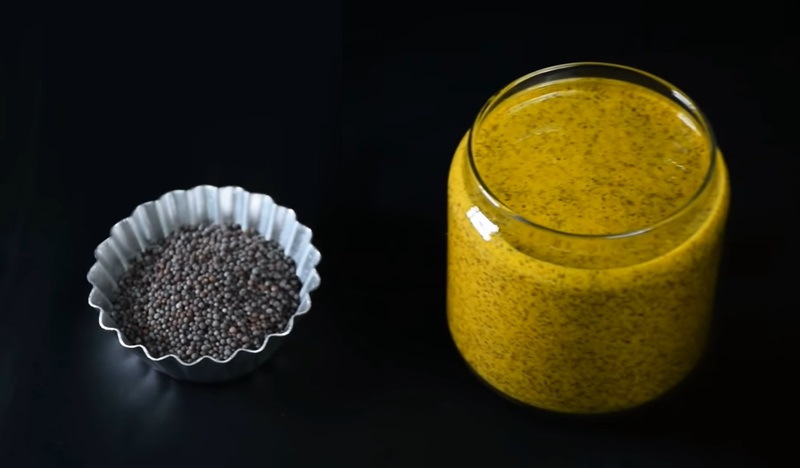
Kasundi is a traditional Bengali dish that is known for its bold and tangy flavors. It is a type of mustard relish that is made from fermented mustard seeds, along with a blend of spices, vinegar, and sometimes tamarind pulp. The rich and pungent taste of kasundi makes it a popular accompaniment to various dishes in Bengali cuisine. To prepare kasundi, mustard seeds are soaked and then ground to a paste-like consistency. This paste is then mixed with spices like turmeric, red chili powder, and salt, along with vinegar or tamarind pulp for added tanginess. The mixture is then left to ferment for a few days, allowing the flavors to develop and intensify. Kasundi can be enjoyed with a wide range of dishes, such as fish, rice, vegetables, or even as a condiment for sandwiches and burgers. Its strong and zesty taste adds a burst of flavor to any meal. In Bengali households, kasundi is often homemade, with each family having their own unique recipe and variations. It is a versatile and beloved dish that truly represents the essence of Bengali cuisine.
Mishti Doi
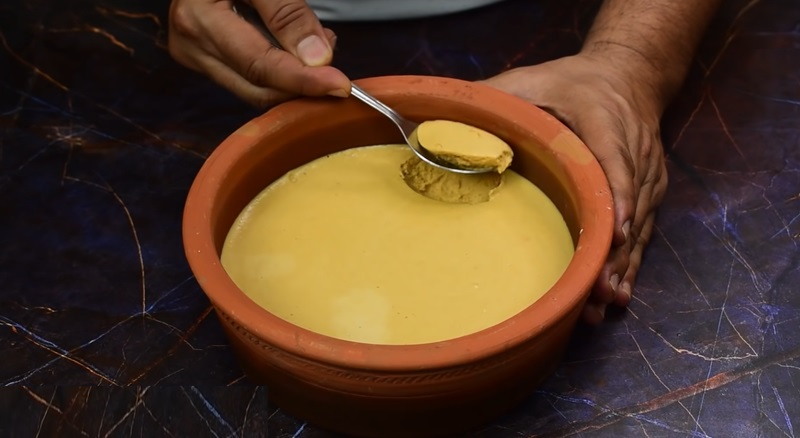
Mishti doi, a revered sweet yogurt that is fermented, originates from the culturally rich Bengal region of the Indian subcontinent. It is quite popular in West Bengal, Tripura, and Assam. What sets mishti doi apart is its meticulous preparation technique and the delightful variations in its renditions.
To make mishti doi, milk is simmered until it slightly thickens. The magic happens when sugar, either rich gura (brown sugar) or flavorful khejur gura (date molasses), sweetens the mixture. The sweetened milk is left to ferment overnight in earthenware, which plays a vital role in shaping the yogurt's character. The porous walls of the earthenware allow gradual evaporation, further thickening the yogurt and creating an ideal environment for culture growth.
Mishti doi has gained popularity in various regions, as they have their unique versions. Sometimes, a touch of cardamom is added to introduce a fragrant note, enhancing the sensory allure of the yogurt. Mishti doi, with its sublime sweetness and cultural significance, is a cherished treat that reflects Bengal's culinary mastery.
Nankhatai
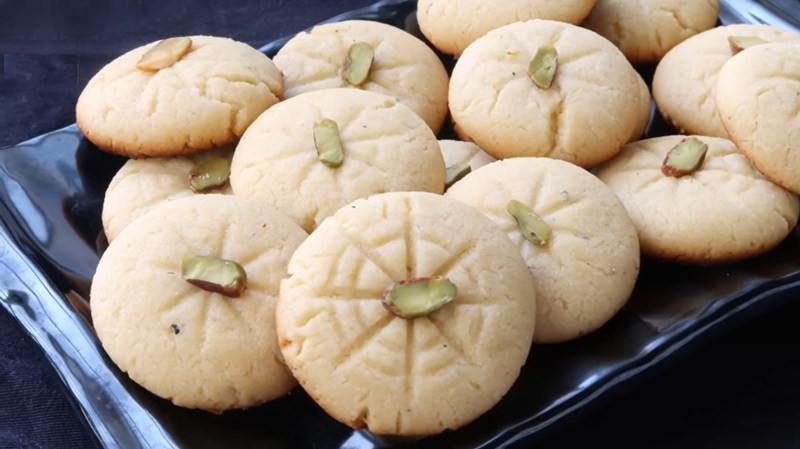
Nankhatai is a delightful type of shortbread cookie. Made from a blend of all-purpose flour, semolina, sugar, ghee (clarified butter), and a hint of cardamom, this cookie is shaped into small round treats and baked until they acquire a golden brown color and a slightly crumbly texture. Loved for its rich and buttery taste, Nankhatai pairs perfectly with a cup of tea or coffee, making it an ideal snack or a special treat during festivals like Eid. The sweet and aromatic aroma of cardamom adds an irresistible twist to these cookies. While the core recipe for Nankhatai remains consistent, various versions and variations can be found. Some may incorporate chopped nuts like almonds or pistachios for added crunch and flavor, while others may include ingredients such as saffron or rose water to enhance the taste.
Luchi
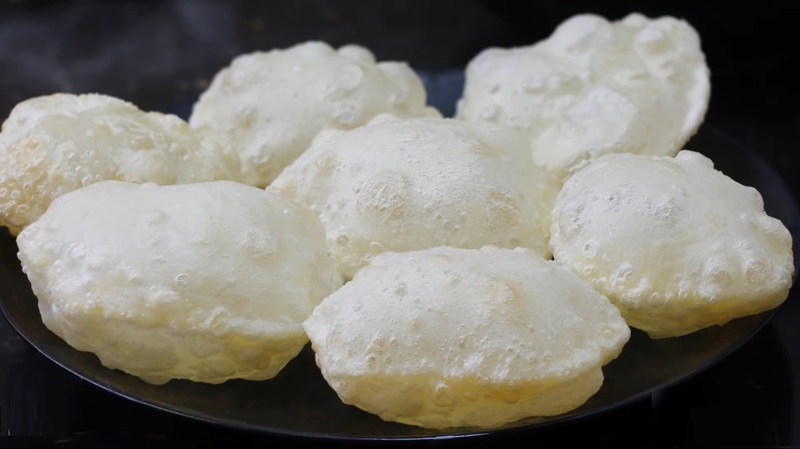
Luchi is a popular dish in Bengali cuisine that is loved by people of all ages. It is a deep-fried bread made from all-purpose flour, often served with a side dish of aloo dum (spicy potato curry) or cholar dal (Bengal gram lentil curry). The process of making luchi involves kneading the dough with a pinch of salt and a little oil, which is then rolled into small rounds and deep-fried until it puffs up to form a soft and fluffy bread. The end result is a golden brown and crispy luchi that is simply irresistible. Luchi is often enjoyed during breakfast or as a part of festive meals and special occasions. It is a versatile dish that can be served with various accompaniments, such as aloo dum, cholar dal, or even with sweet dishes like mishti doi (sweet yogurt) or payesh (rice pudding). The combination of the crispy luchi with the flavorful curries creates a delightful explosion of tastes and textures in every bite.
Panta Bhat
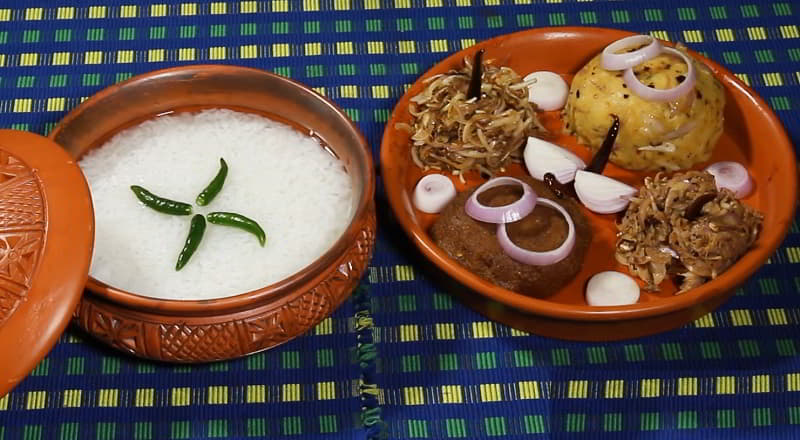
Panta bhat is a traditional dish hailing from the Northeast region of India, specifically loved in Assam and West Bengal. It is a distinctive and flavorful rice dish created by fermenting leftover cooked rice overnight. The process involves soaking the rice in water and allowing it to ferment overnight. The following morning, the rice is typically served cold, accompanied by a variety of side dishes like fried fish, pickles, and curries. Panta bhat has a slightly soft and gooey texture with a tangy and sour taste. The fermentation not only enhances the flavor but also aids digestion, making it an ideal dish for hot summer days as it provides a cooling effect on the body.
Not only is panta bhat delicious, but it is also highly nutritious. The fermentation process boosts the rice's nutritional value, making it a rich source of probiotics and beneficial enzymes. Additionally, it is a great source of carbohydrates and dietary fiber. In conclusion, panta bhat is a delightful and healthy dish that exemplifies the culinary heritage of the region and is enjoyed by people of all ages.
Pantua
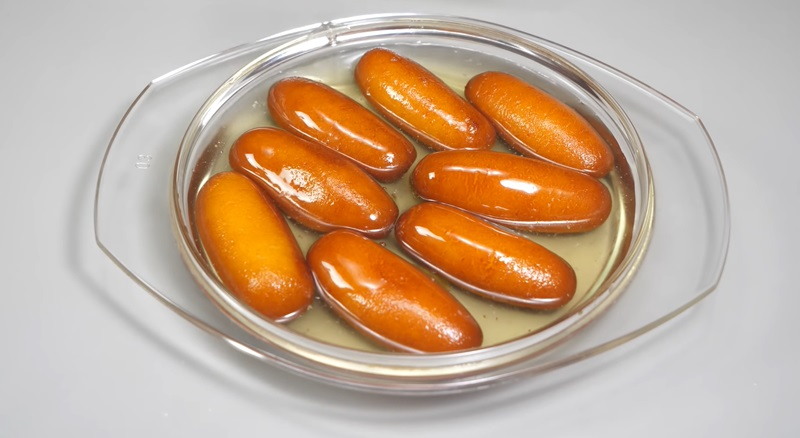
Pantua, a beloved regional treat from the Indian subcontinent, holds a special place in the hearts and taste buds of people in West Bengal and other parts of Eastern India. This delightful Bengali sweet is a masterpiece of culinary craftsmanship, made from a blend of chhena (Indian cottage cheese), ghee, semolina, milk, and a delicious sugar syrup.
The unique preparation of pantua involves shaping the ingredients into appealing balls, which are then deep-fried. The frying process gives these mouthwatering orbs a range of colors, from a light brown to a rich, almost black shade. For an enhanced sensory experience, pantuas can be infused with the aromatic essence of rose water, cardamom, or other flavors, adding an extra layer of complexity to the sweet's taste.
Beyond its tempting flavor and diverse textures, pantua represents the cultural heritage of the region, capturing the essence of traditional Bengali sweets.
Ghugni
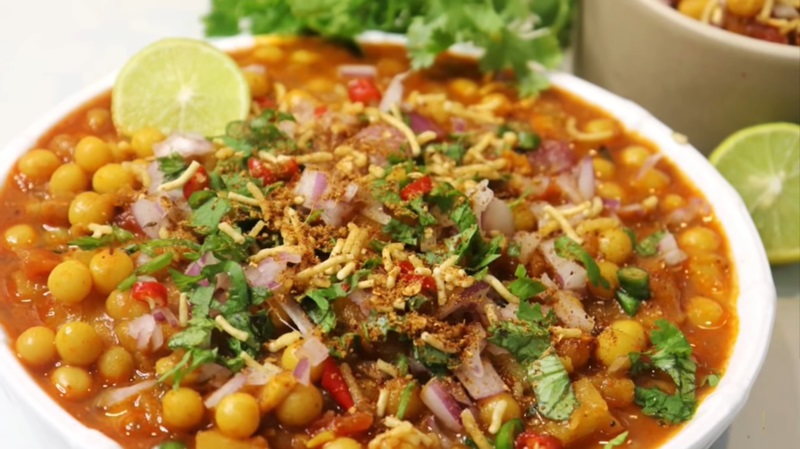
Ghugni, also known as guguni, is a delicious curry made from peas or chickpeas. It comes in different versions using different types of legumes such as green peas, white peas, or black gram. This savory snack originated in the Indian subcontinent and is particularly enjoyed in the easter states of India, including West Bengal. In Bihar, the dish highlights the freshness of green chickpeas or newly harvested green peas. These legumes are gently fried in mustard oil with green chilies and cumin seeds, giving it a distinct flavor compared to the curry-based versions found in eastern India.
Ghugni represents the diversity of the region with its unique variations and is loved during various cultural festivities. It is a cherished dish that showcases the rich culinary heritage of the area.
Shemai
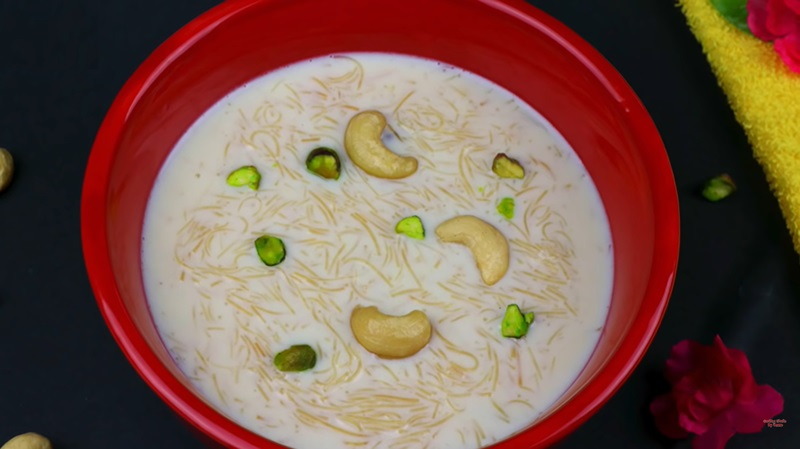
Shemai is a beloved dessert that holds a special place in the culinary traditions of West Bengal, India. While it is often associated with festive occasions, particularly Eid, it is enjoyed throughout the year. This delightful sweet is made from vermicelli, cooked in sweetened milk and garnished with an assortment of nuts.
The key ingredients for shemai include milk, roasted vermicelli, sugar, ghee, and a variety of nuts and spices. When combined, these elements create a rich, creamy, and textured treat that tantalizes the taste buds. There are many different versions of shemai available, each offering a unique experience. Some incorporate kheer to add an extra layer of decadence, while others highlight the opulence of dry fruits, enhancing both the visual and sensory appeal. One such variation is jodda shemai, which puts a unique twist on this beloved dessert.
The versatility of shemai, with its nuanced flavors and textures, has made it a perennial favorite beyond specific festivities. As it graces tables with its sweet presence, shemai represents the cultural richness and culinary finesse of the regions it originates from, bringing moments of joy and indulgence to those lucky enough to savor its delights.
Mughlai Paratha
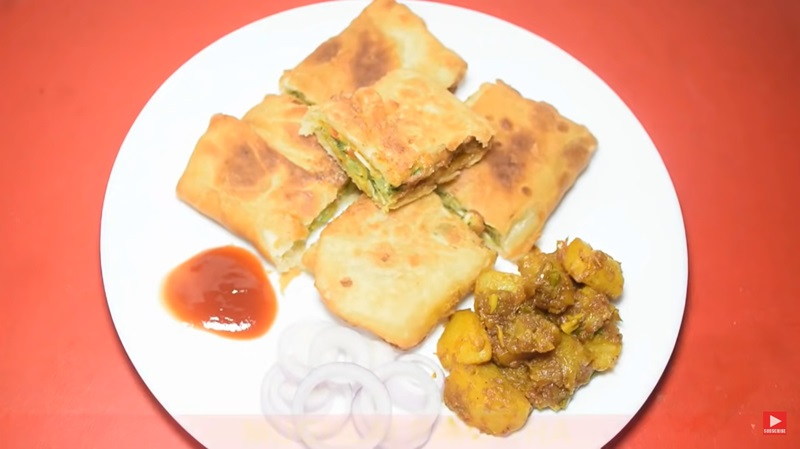
Mughlai paratha, a beloved Bengali street food, features a flatbread stuffed with spiced minced meat (keema) and/or egg. Originating during the Mughal Empire in Bengal Subah, it's a derivative of Turkish Gözleme. Introduced during Emperor Jahangir's reign, it spread to Kolkata from old capitals like Murshidabad and Dhaka, becoming a popular street snack after Kolkata became the capital of British Bengal presidency.
Jaynagarer Moa
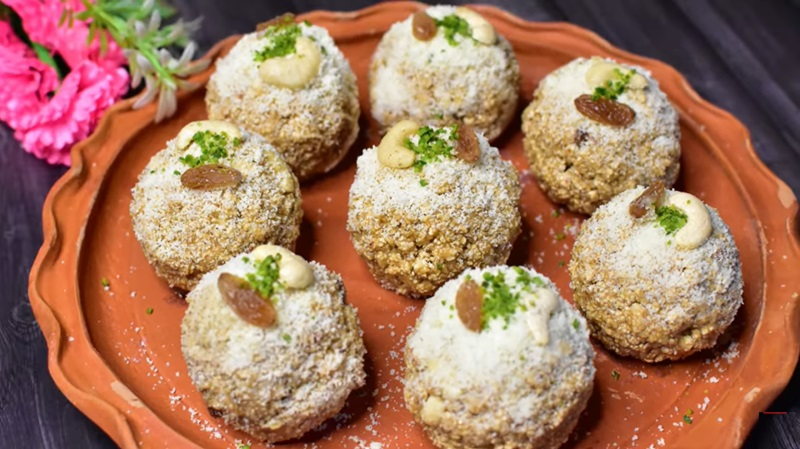
Jaynagarer Moa is a special sweet delicacy from Bengal. It is made by combining date palm jaggery and Kanakchur khoi, resulting in a unique and delicious treat. Originally from Jaynagar Majilpur in West Bengal, this sweet has gained popularity in Kolkata and beyond. While some variations may use cheaper ingredients and artificial flavors, the authentic Jaynagarer Moa has been recognized with a Geographical Indication tag in 2015. This protection ensures that the original recipe and cultural heritage are preserved. As a seasonal delight, Jaynagarer Moa represents the rich culinary traditions of Bengal and offers a sweet and nostalgic experience for those who enjoy its exquisite taste.
Chotpoti
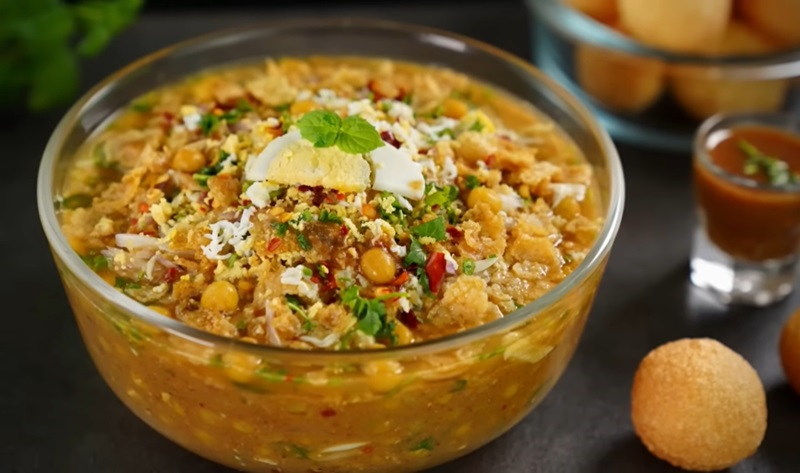
Chotpoti, a beloved street food delicacy in Bengal, is a flavorful medley of chickpeas, boiled potatoes, chopped onions, and boiled eggs, all drenched in a tangy and spicy curry. This dish embodies the vibrant and diverse flavors of Bengali cuisine, offering a tantalizing blend of textures and tastes.
The chickpea curry, typically seasoned with a mix of spices like cumin, coriander, and chili powder, provides a rich and aromatic base for the dish. The addition of boiled eggs and potatoes adds heartiness, while the fresh crunch of chopped onions enhances the overall texture.
Chotpoti is often garnished with a drizzle of tangy tamarind sauce and a sprinkle of crunchy fried noodles or chickpea flour crisps (sev).
Aloo Gosht
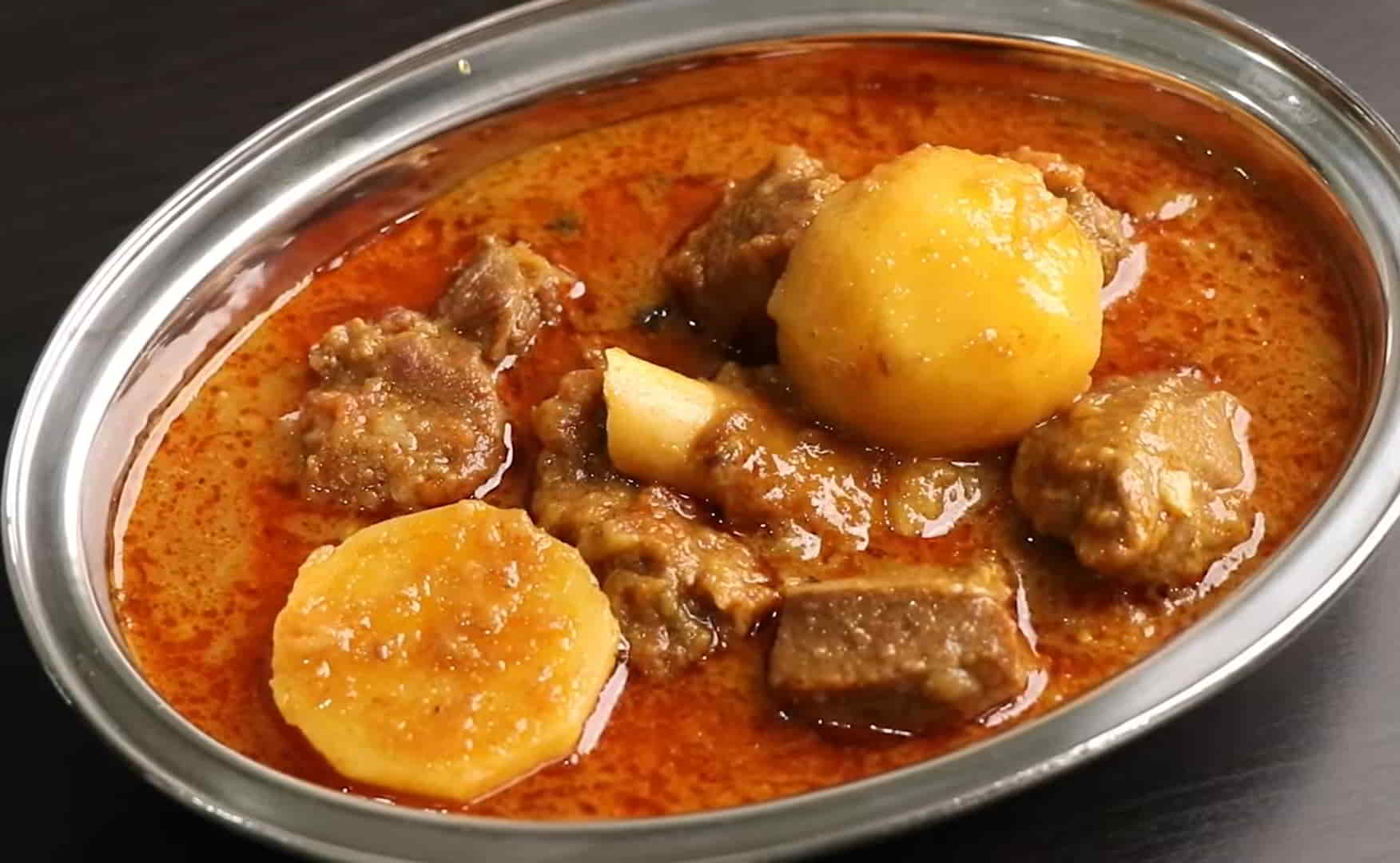
Aloo gosht, a beloved dish in the bengali cuisine, is known for its popularity and delicious taste. This traditional recipe brings together succulent meat chunks, typically goat or lamb, with potatoes in a flavorful and aromatic gravy. The name "aloo gosht" translates to "meat and potatoes" in English, perfectly capturing the essence of this dish. To prepare it, the meat is marinated in a blend of spices like ginger, garlic, turmeric, cumin, and coriander. These flavors infuse the meat as it is cooked with onions, tomatoes, and a combination of spices such as garam masala and red chili powder. The addition of potatoes allows them to absorb the meat and spice flavors, resulting in a hearty and satisfying dish. Aloo gosht is commonly enjoyed alongside steamed rice or roti, a type of flatbread. It is a favorite among meat enthusiasts in the Indian subcontinent and is often served at special gatherings and events.
Bhapa Pitha
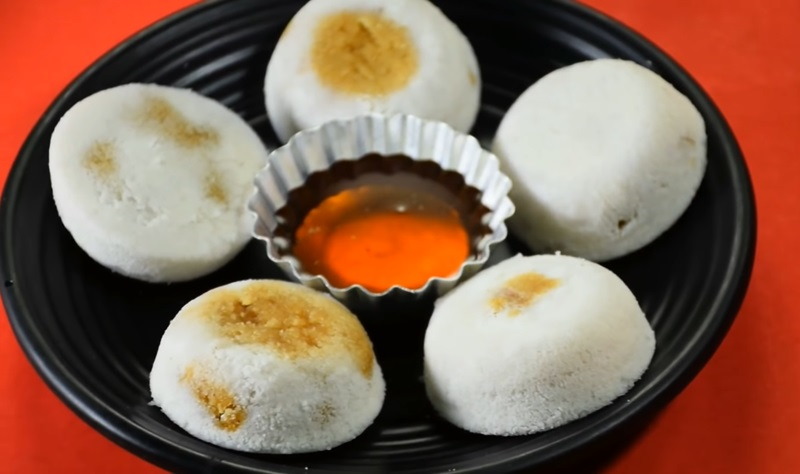
Bhapa pitha is a traditional dish that holds a special place in the hearts and palates of the people of Bengal. This delectable steamed rice cake is a popular treat, especially during festivals and celebrations. The name "bhapa" means steamed, and "pitha" refers to the sweet or savory rice cakes in Bengali cuisine. To prepare bhapa pitha, a batter is made using rice flour, grated coconut, jaggery (a traditional sweetener), and a touch of cardamom for flavor. The mixture is then poured into small bowls or containers, which are then placed in a steamer for cooking. The steam penetrates the batter, resulting in a soft and spongy texture. The aroma of freshly steamed bhapa pitha is irresistible. It can be served as a dessert with a sprinkle of grated coconut on top or as a breakfast dish accompanied by a cup of tea. The sweet version is often enjoyed with a drizzle of date syrup or a dollop of ghee.
Beguni
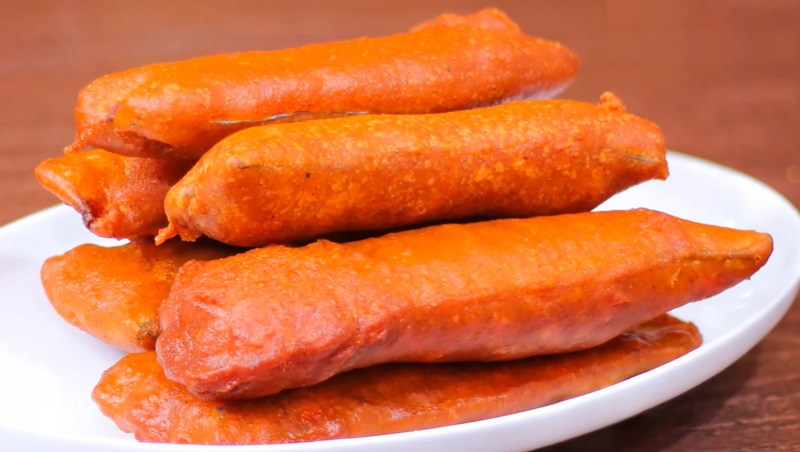
Beguni is a common Bengali snack. It is a deep-fried snack made from thinly sliced eggplant (brinjal) dipped in a spiced gram flour batter. The name "beguni" is derived from the Bengali word "begun," which means eggplant. To prepare beguni, the eggplant slices are first coated with a mixture of gram flour (besan), salt, turmeric, chili powder, and other spices. This batter not only adds flavor but also gives the dish a crispy texture when deep-fried. The coated eggplant slices are then carefully placed in hot oil until they turn golden brown and become crispy. Beguni is commonly served as a popular street food in West Bengal, Bangladesh, and other Bengali-speaking regions. It is often enjoyed as a tea-time snack or appetizer. The crispy and flavorful beguni pairs well with a cup of hot tea or a tangy tamarind chutney. With its simple yet delicious preparation, beguni has become a beloved dish among Bengalis.
Machher Jhol
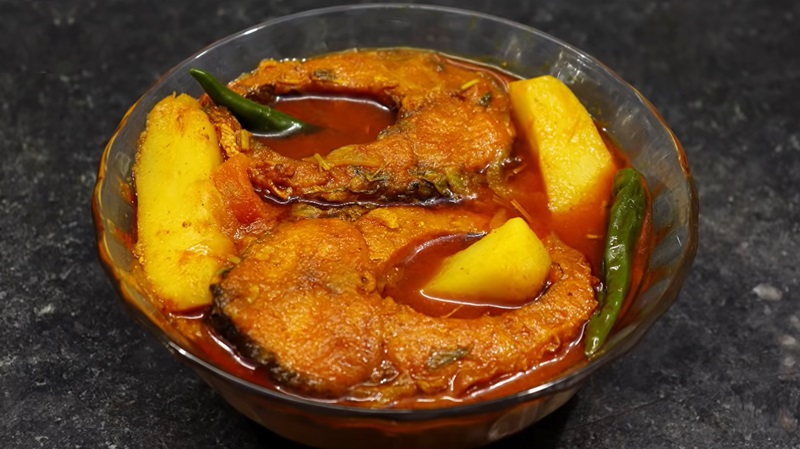
Machher Jhol is a beloved fish curry originating from the Eastern region of India, specifically West Bengal. This delightful dish exemplifies the region's rich culinary heritage and affinity for seafood. Fresh fish, typically Rohu or Katla, takes center stage in Machher Jhol, as it is gently simmered in a savory broth infused with a blend of spices. The curry's distinguishing feature is its light and thin consistency, allowing the flavors to permeate the fish perfectly. Commonly used spices include turmeric, cumin, coriander, ginger, garlic, and green chilies, which impart a tantalizing aroma and a harmonious balance of heat and tanginess. To further enhance the taste, vegetables like potatoes or eggplants are often added, contributing a delightful contrast in texture. Machher Jhol is traditionally enjoyed with steamed rice, creating a comforting and gratifying meal.
Beyond being a mere culinary creation, Machher Jhol represents the vibrant flavors and cultural diversity that India embraces. Whether relished in a traditional Bengali household or savored in a restaurant, this curry is guaranteed to leave your taste buds craving for more.
Tarkari
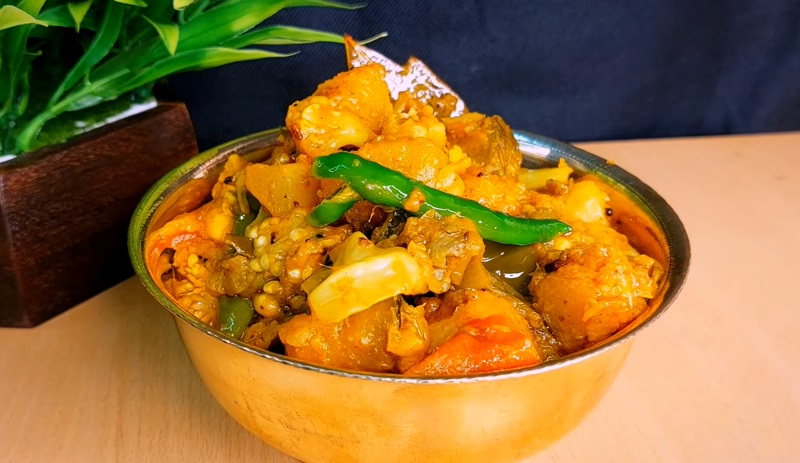
Bengali cuisine is renowned for its rich flavors and diverse range of dishes, and one such dish that stands out is Tarkari. Tarkari is a vegetable curry that is a staple in Bengali households and is enjoyed across all seasons. The base of Tarkari is made from a combination of spices, such as cumin, coriander, turmeric, and red chili powder, which are sautéed in oil or ghee to release their aromatic flavors. This spice mixture is then combined with a variety of vegetables, such as potatoes, cauliflower, peas, carrots, and beans, to create a hearty and flavorful curry. What sets Tarkari apart is the use of panch phoron, a blend of five spices including fenugreek seeds, cumin seeds, fennel seeds, black mustard seeds, and nigella seeds. This spice mix adds a unique and distinct flavor to the dish. Tarkari is often enjoyed with steamed rice or roti, and it can be customized to suit individual preferences by adding meat or fish. It is a versatile dish that can be made with seasonal vegetables, making it a nutritious and wholesome choice for a meal.
Alu Chat
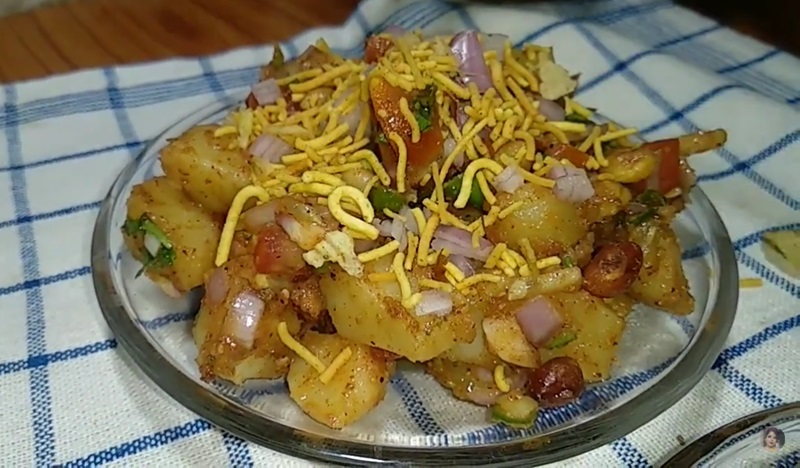
Alu chat is a delicious combination of boiled potatoes, spices, and tangy chutneys that create a burst of flavors in every bite. To prepare alu chat, the potatoes are first boiled until they are soft and tender. They are then diced into small pieces and mixed with an array of spices such as chaat masala, red chili powder, roasted cumin powder, and black salt. This gives the dish a distinct and spicy flavor. Next, the potatoes are topped with a variety of chutneys, including tamarind chutney and mint chutney. These chutneys add a tangy and refreshing taste to the dish. Other toppings such as chopped onions, coriander leaves, and sev (crispy fried noodles) are also added to enhance the texture and taste. Alu chat is typically served in small bowls or paper cones, making it a perfect snack to enjoy on the go. It is a popular street food item that is often found at food stalls and carts in bustling markets and busy streets.
Chingri Malai Curry
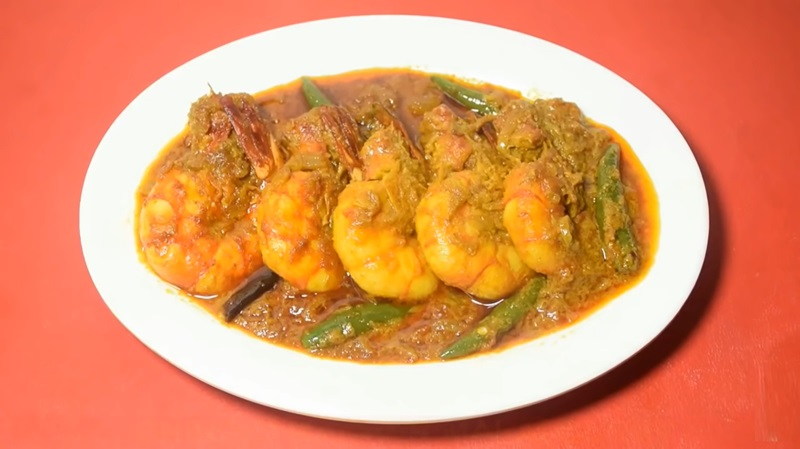
Chingri Malai Curry is a luscious Bengali dish featuring prawns (chingri) cooked in a creamy coconut milk gravy (malai curry). To prepare, onions, tomatoes, ginger, and garlic are sautéed with spices like turmeric, chili powder, and cumin seeds. Thick coconut milk is then added to create a rich base. Cleaned prawns are gently simmered in this fragrant gravy until they turn pink and opaque. Garam masala adds depth of flavor, while green chilies provide a subtle heat. Garnished with fresh coriander leaves, this dish tantalizes the taste buds with its delicate yet complex flavors. Chingri Malai Curry is often served with steamed rice or bread, making it a delightful centerpiece for any Bengali feast or special occasion.
Shukto
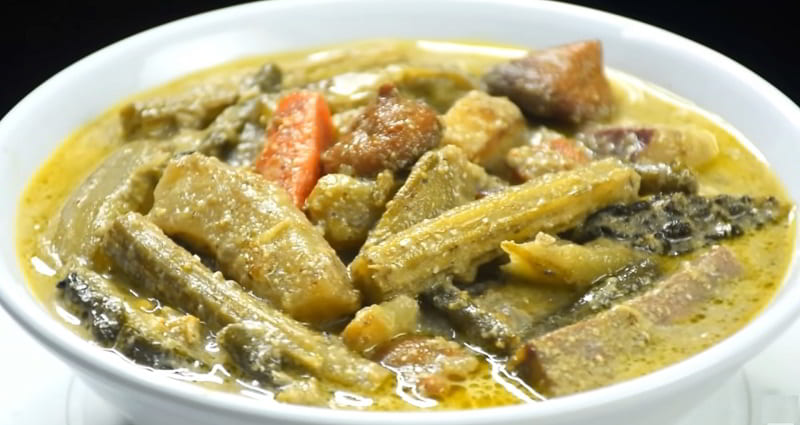
Shukto is a traditional Bengali dish that is known for its unique blend of bitter and sweet flavors. It is typically served as the first course of a meal and is believed to have originated from the culinary traditions of West Bengal, India.
Shukto is a vegetable medley prepared with a variety of seasonal vegetables such as bitter gourd (karela), drumsticks (shojne data), eggplant (begun), potatoes, sweet potatoes, and beans. The vegetables are typically sliced or chopped into bite-sized pieces.
The dish is characterized by its mildly bitter taste, which comes from ingredients like bitter gourd and bitter seeds. To balance the bitterness, Shukto is cooked with a touch of sweetness from ingredients such as ripe plantains or sugar.
Shukto is flavored with a tempering of mustard seeds, cumin seeds, dried red chilies, and bay leaves, which adds depth and aroma to the dish. It is often cooked in a thin gravy made with milk or water, and sometimes thickened with a paste made from roasted chickpea flour (besan).
Shukto is considered a quintessential Bengali delicacy and is often served during special occasions and festivals, as well as on regular days as a nutritious and wholesome meal. It is enjoyed with steamed rice or luchi (deep-fried flatbread) to soak up the flavorful gravy.
Shorshe Ilish
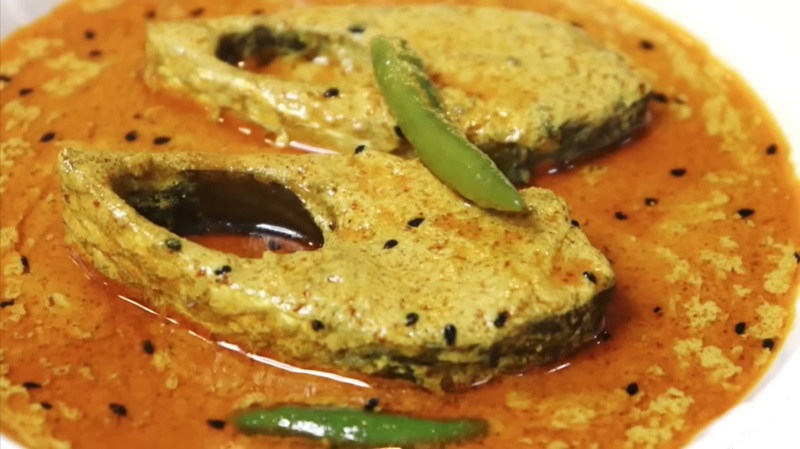
Shorshe ilish is a quintessential Bengali dish that showcases the rich flavors of Bengali cuisine. It is a delectable preparation of ilish, which is a type of hilsa fish, cooked in a mustard sauce. To make shorshe ilish, fresh ilish fillets are marinated in a mixture of turmeric, salt, and mustard oil. The fillets are then lightly fried until golden brown. Meanwhile, a paste is made from mustard seeds, green chilies, and a touch of turmeric. This paste is then added to a pan with oil and cooked until it releases its distinct aroma. The fried ilish fillets are gently added to the pan and cooked with the mustard sauce, allowing the flavors to infuse and the fish to become tender. The result is a dish with a perfect balance of flavors - the pungent and slightly bitter taste of mustard, the heat from the green chilies, and the delicate sweetness of the ilish. Shorshe ilish is typically enjoyed with steamed rice, which helps to soak up the flavorful mustard sauce. This dish is not only a favorite among Bengalis but is also celebrated during festivals and special occasions. Its unique combination of flavors and the freshness of the ilish make shorshe ilish a true delight for seafood lovers and a must-try for anyone looking to explore Bengali cuisine.
Bori
-1708596780.jpg)
Bori, also known as "sun-dried lentil dumplings," is a traditional ingredient used in Bengali cuisine. These small, round dumplings are made by soaking lentils, grinding them into a paste, shaping them into small balls, and then sun-drying them until they are firm and dry.
The main ingredients used to make bori are lentils, typically urad dal (black gram lentils) or masoor dal (red lentils). Other ingredients may include spices like cumin seeds, salt, and sometimes turmeric for color.
Bori is a versatile ingredient used in various Bengali dishes to add texture, flavor, and protein. It is often added to vegetable curries, lentil soups (dal), and fish or meat dishes to thicken the gravy and enhance the taste. Bori can also be fried and served as a crunchy topping or snack. Bori is prized for its ability to add depth and complexity to dishes. Whether used as a thickening agent, seasoning, or crunchy topping, bori enhances the flavor and texture of traditional Bengali recipes.
Aloo Chop

Aloo Chop is a popular street food in Bengal, known for its irresistible taste and crispy texture. This traditional Bengali dish features a deliciously spiced potato filling encased in a crispy breadcrumb coating. Aloo Chop is typically served as a tea-time snack or as an appetizer during festive occasions. To prepare Aloo Chop, boiled potatoes are mashed and mixed with a blend of aromatic spices such as cumin, coriander, turmeric, and red chili powder. This mixture is then shaped into small patties and coated with breadcrumbs before being deep-fried until golden brown. The result is a perfectly crisp exterior that gives way to a soft and flavorful potato filling. This savory snack is often enjoyed with a side of tangy tamarind chutney or a refreshing green chutney. The combination of the crispy coating, the spiced potato filling, and the sweet and tangy chutneys create a delightful burst of flavors in every bite. Aloo Chop is not only a popular street food but also a beloved comfort food in Bengal.
Sarpuria
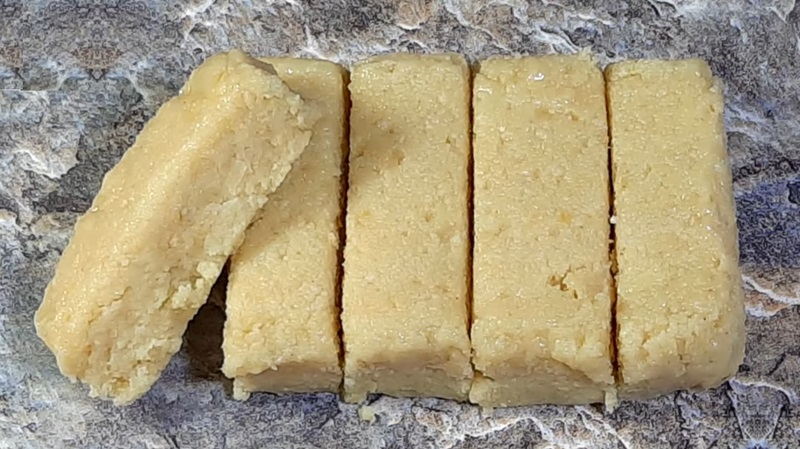
Sarpuria is a delectable sweet dish that originates from the state of West Bengal in India and is an integral part of Bengali cuisine. This traditional dessert is made from a unique combination of ingredients that give it a distinctive taste and texture. Sarpuria boasts a lusciously creamy texture with a balanced sweetness that appeals to individuals of all ages. Its softness and moderate sweetness are enticing, while fragments of milk skin (sar) add a delightful texture to each bite, creating a uniquely enjoyable culinary experience.
Nabadwip-er Lal Doi
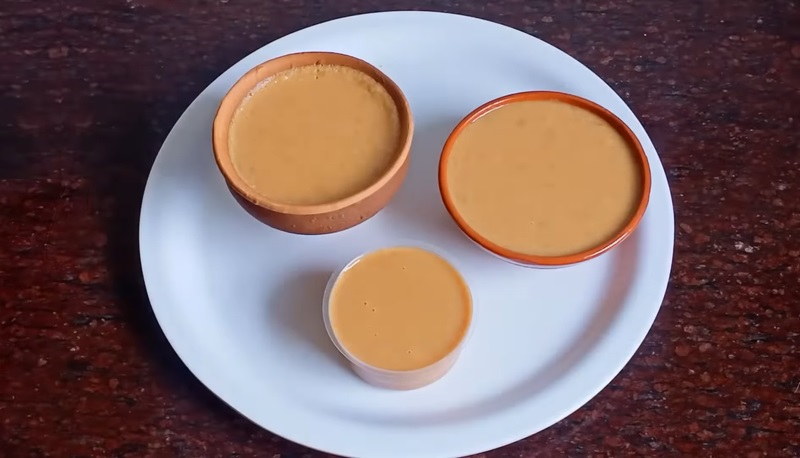
Nabadwip-er Lal Doi, also known as Nabadwip's Red Yogurt, is a famous Bengali sweet originating from the town of Nabadwip in West Bengal, India. This traditional dessert is renowned for its rich, creamy texture and vibrant red color, achieved through the addition of natural food coloring or jaggery (unrefined cane sugar). Prepared by fermenting sweetened milk over a low flame for several hours, Lal Doi acquires a distinctively tangy flavor profile. It is often served chilled and garnished with chopped nuts or dried fruits, offering a delightful combination of sweetness and tartness that tantalizes the taste buds.
Gohona Bori
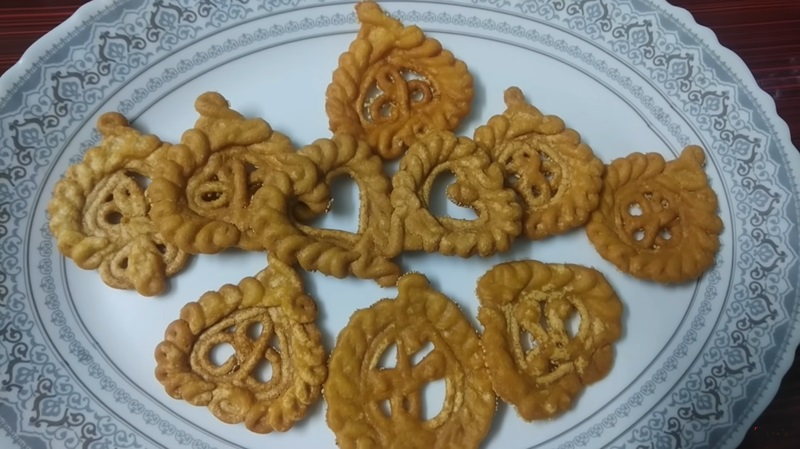
Gohona Boris, a culinary marvel primarily crafted in the Purba Medinipur (East Midnapore) region including Mahishadal, Tamluk, Panskura, and Sutahata, are intricate works of art resembling ornamental designs. They come in various shapes such as earrings, necklaces, tiaras, and adorned with paisley and floral motifs. While boris can be made from lentils like masoor and matar dal, or vegetables such as bottle gourd, ash gourd, cauliflower, and radish, they are typically crafted from a batter of biuli dal (black gram or urad dal) and spices. Gohona Boris, in particular, are piped onto a plate of poppy seeds (posto) and sun-dried during the winter month.
Chadachadi
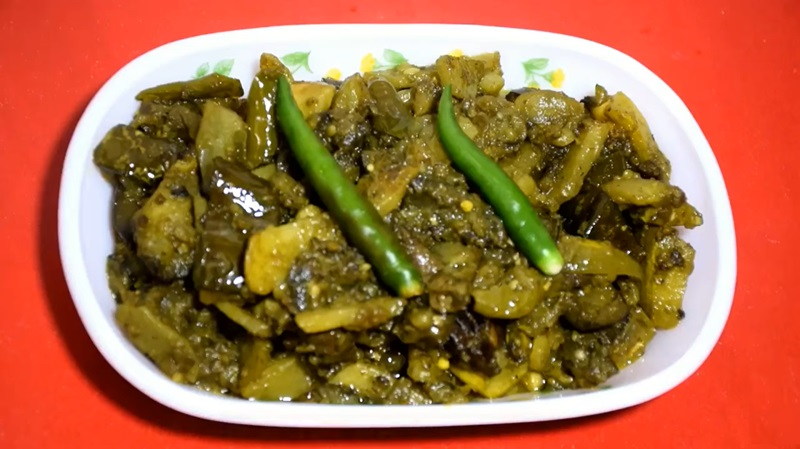
Chadachadi is a traditional Bengali vegetable dish renowned for its medley of seasonal vegetables and vibrant flavors. The dish typically incorporates a variety of vegetables such as potatoes, eggplant, cauliflower, green beans, pumpkin, and ridge gourd, among others. These vegetables are chopped into bite-sized pieces and cooked together with aromatic spices to create a harmonious blend of tastes and textures.
To prepare Chadachadi, mustard oil is heated in a pan, and whole spices like cumin seeds and mustard seeds are added for tempering. Chopped onions, ginger, garlic, and green chilies are then sautéed until golden brown. The vegetables are then added to the pan along with turmeric powder and salt. They are cooked until tender yet still retain their individual textures.
Chadachadi can be customized based on seasonal availability and personal preferences. Some variations may include the addition of grated coconut or poppy seed paste for richness. Others may incorporate seafood like shrimp or fish to create a non-vegetarian version.
This flavorful dish is commonly served as a side dish alongside steamed rice or roti, making it a staple of Bengali cuisine that is cherished for its wholesome ingredients and aromatic spices.
Aloo Chokha
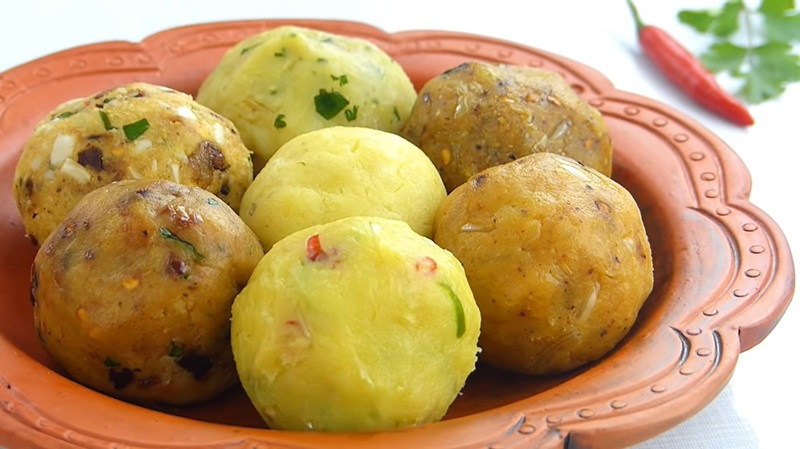
Aloo Chokha is a popular and traditional dish that is loved for its simplicity and delicious flavors. It is a mashed potato dish that is typically served as a side dish or a snack. Aloo Chokha is made by boiling potatoes until they are tender, then mashing them with a fork or a masher. The mashed potatoes are then mixed with chopped onions, green chilies, garlic, and mustard oil, which gives it a distinct and aromatic flavor. Aloo Chokha is often seasoned with spices like turmeric, cumin, and coriander, which add a burst of flavor to the dish. It can be enjoyed as a standalone dish or served with roti, rice, or even as a filling for sandwiches or wraps. The dish is a perfect combination of creamy mashed potatoes and the heat from the chilies, making it a comforting and satisfying treat. Aloo Chokha is not only delicious but also versatile, as it can be customized with additional ingredients like tomatoes, peas, or even paneer to add more texture and flavor. It is a popular dish in Bengali households and is often prepared during festivals and special occasions. Whether enjoyed as a side dish or a snack, Aloo Chokha is sure to leave you craving for more with its delectable taste and simplicity.
Lobong Lotika
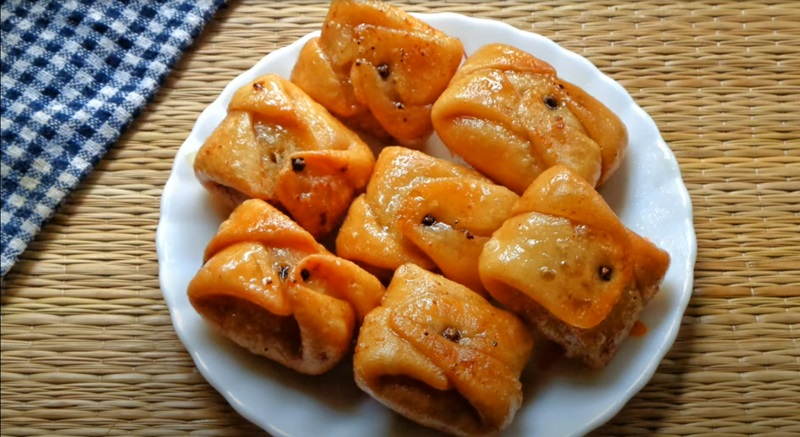
Lobong lotika, a delightful dish from Bengali cuisine, is a popular sweet treat that is typically enjoyed during festive occasions or as a special dessert. This delectable delicacy is known for its unique shape and irresistible taste. The preparation of lobong lotika involves a few key ingredients, primarily maida (refined flour) and khoya (reduced milk solids). The dough is first kneaded with ghee to achieve a soft and pliable consistency. It is then rolled out into thin sheets and cut into rectangular shapes. These rectangles are then folded and shaped in a distinctive manner, resembling an envelope or a pyramid, giving lobong lotika its characteristic appearance. Once the dough is prepared, it is deep-fried to golden perfection, resulting in a crispy and flaky texture. To enhance its flavor, the fried lobong lotika is soaked in a sweet sugar syrup infused with aromatic spices like cinnamon, cardamom, and cloves. This syrup imparts a delightful sweetness and a subtle hint of spice to the dish. Lobong lotika is often garnished with a sprinkle of powdered sugar or finely chopped nuts, such as almonds or pistachios, adding a delightful crunch and visual appeal. The combination of the crispy outer layer, the succulent filling, and the fragrant syrup creates a harmonious blend of textures and flavors that make lobong lotika a true delight.
Ashke Pithe

Ashke Pithe, also known as Dhaka Pithe, Chikui Pithe, and Sora Pithe, is a beloved rice cake popular in West Bengal, India. Resembling South Indian Idli, it is traditionally prepared during Paush Sankranti. Typically served with molasses, it pairs well with lentils, fish curry, peas, and meat curry, especially with Koi fish. The main ingredients include half-seasoned rice powder, salt, water, and corn oil. Traditionally, it's cooked using a special soil lid, sometimes covered with a smaller soil lid. Nowadays, brass lids and aluminum pots are also used in its preparation.
Babarsa
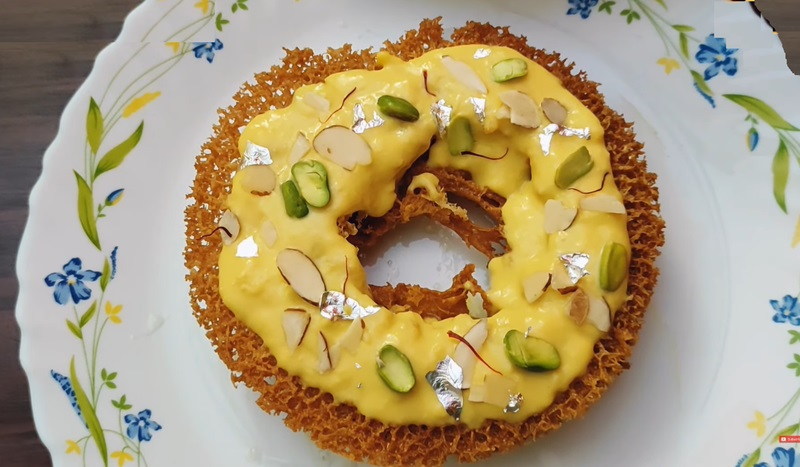
Babarsa, a traditional confection hailing from the Khirpai region of Medinipur district in West Bengal, India, has a rich history dating back approximately 250 years. Originating from the settlement of Midnapur Khirpai, its name is derived from "Edward Babar". Initially crafted from flour, milk, and ghee, Babarsa is also fried in dalada instead of ghee. Molded to shape and served with its juice during meals, it was traditionally coated with honey in the past. This sweet delicacy embodies a centuries-old culinary heritage and remains a cherished treat in the region.
Chhenabara
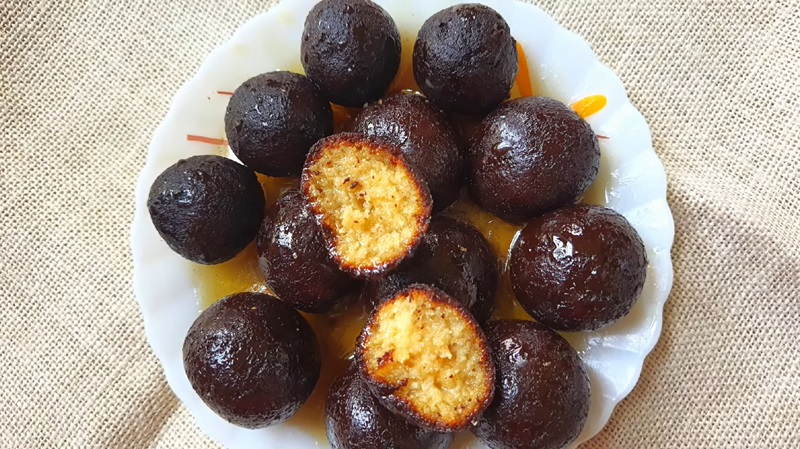
Chhanabora, a sweetmeat originating from the Indian subcontinent, is crafted from chhena (cottage cheese) and syrup. Dating back to the 16th century, it shares similarities with rosogolla and pantua, featuring a cottage cheese base like the former and a burnt brown crust like the latter. Legend has it that Chhanabora was born when Maharaja Manindrachandra Nandi of Cossimbazar sought a unique dessert that differed from rosogolla and pantua. This sweet delicacy is particularly popular in Murshidabad, where oversized Chhanaboras are often presented as gifts to esteemed visitors.
Machh Bhaja
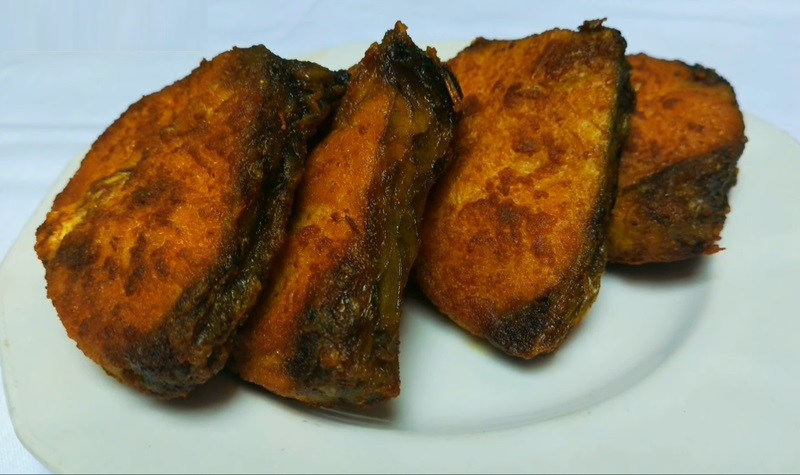
Machh Bhaja is a traditional Bengali dish cherished for its simplicity and delightful flavor. This iconic delicacy features fresh fish, typically varieties like Rohu or Katla, marinated in a blend of turmeric, chili powder, and salt. The fish pieces are then deep-fried until golden and crispy. The result is tender, succulent fish encased in a crispy, flavorful crust, offering a perfect balance of textures and tastes. Machh Bhaja is often served as a side dish alongside steamed rice and lentils (dal), or as a starter during festive occasions and family gatherings. Its popularity lies in its simplicity, highlighting the natural flavors of the fish enhanced by the aromatic spices, making it a beloved part of Bengali cuisine.
Daab Chingri

Daab Chingri is a traditional Bengali delicacy that is known for its unique cooking technique and distinctive flavors. It is a dish made with prawns cooked in a tender green coconut shell, which infuses the dish with a rich and aromatic taste. To prepare Daab Chingri, the tender coconut is first emptied and the flesh is scraped out. The prawns are mixed with a blend of spices, including turmeric, red chili powder, mustard oil, mustard paste, chili paste, coconut paste, coconut water, etc. Th is mix is then tuffed inside the coconut shell. The shell is sealed with dough to retain the flavors and moisture. The coconut shell is then cooked slowly over a low flame, allowing the flavors to develop and the prawns to become tender. The natural sweetness of the coconut blends with the spices, creating a delightful balance of flavors.
Phuchka
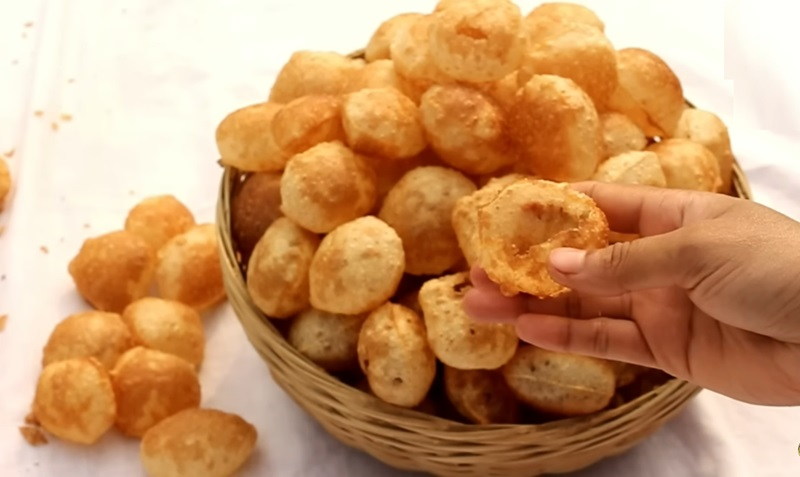
Phuchka, also known as golgappa or pani puri in other parts of India, is a popular street food dish in Bengal. It is a delightful burst of flavors and textures that tantalize the taste buds. Phuchka consists of small, hollow, crispy puris filled with a mixture of mashed potatoes, chickpeas, onions, and spices. The dish gets its unique taste from the tangy tamarind water that is poured into the puris just before serving. The combination of the crispy puris, spicy filling, and tangy water creates a symphony of flavors in every bite. Phuchka is typically served as a snack or appetizer, and it is loved by people of all ages. It is a popular choice during festivals, gatherings, and even as a quick street food snack. The dish is not only delicious but also a visual treat. The sight of the phuchka vendor skillfully filling the puris with the flavorful mixture and pouring the tamarind water is a spectacle in itself.
Chicken Tikka Masala
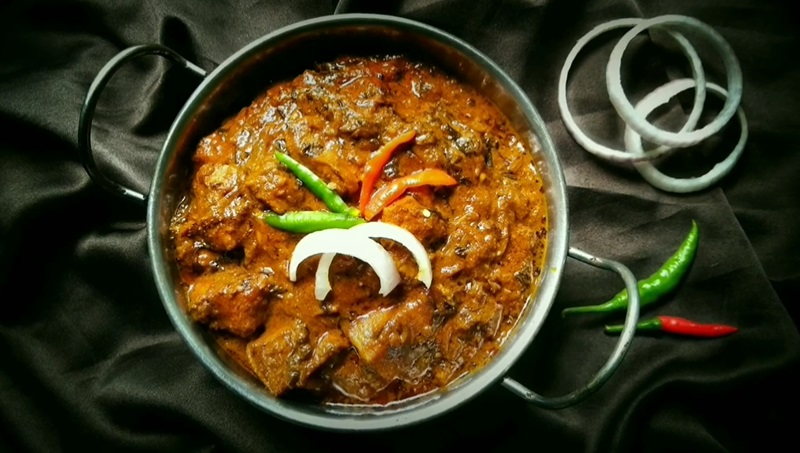
Chicken Tikka Masala is a culinary masterpiece that knows no cultural bounds, offering a symphony of flavors that delight the taste buds. This renowned dish showcases juicy, marinated chicken pieces enveloped in a decadent, spiced sauce. The sauce, with its vibrant orange hue, is the highlight of the dish, as it combines a medley of spices, transforming the tender chicken into a gastronomic treasure. While its exact origins remain a mystery, Chicken Tikka Masala has become synonymous with the South Asian community in Great Britain and has gained worldwide popularity, gracing menus in restaurants across the globe. This culinary gem not only celebrates the art of blending diverse flavors but also serves as a testament to the cultural exchange that enriches the global culinary landscape.
Curry
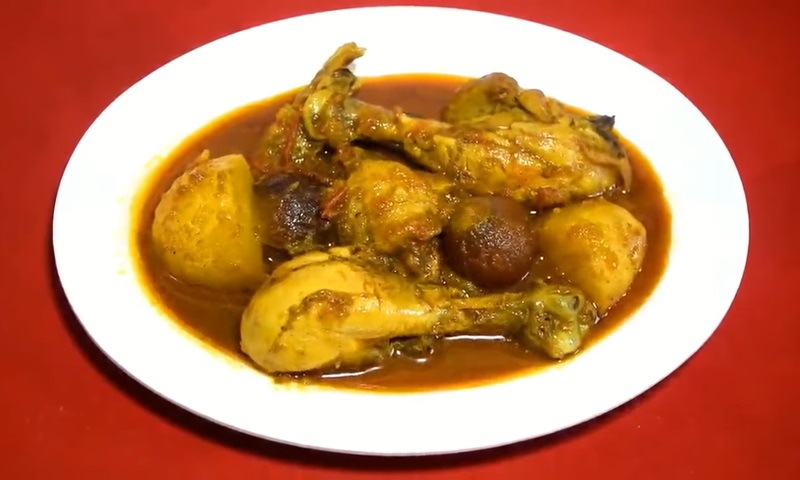
Curry, a sauce seasoned with spices, is widely enjoyed in the Indian subcontinent. It comes in various types and can be made with meat, fish, poultry, or vegetables. The base of curry consists of a blend of spices like cumin, coriander, turmeric, and chili powder, which give it a distinct and vibrant flavor. Onion, garlic, and ginger are also added for additional taste. Meat curries, such as chicken, beef, or goat, are often slow-cooked to ensure tenderness and to infuse the flavors of the spices. Fish curries utilize freshwater fish like Hilsa or Rui, cooked in a tangy and spicy sauce. Vegetarian curries like mixed vegetable or lentil curry are also popular choices. These flavorful dishes are typically served with fragrant rice or traditional flatbreads such as naan or roti, creating a delightful combination of savory flavors and aromatic spices.
Puri
-1708665383.jpg)
Puri is a deep-fried bread made from wheat flour, salt, and water. This culinary delight is served with various side dishes and goes through a careful preparation process. The dough is kneaded to achieve a soft and flexible texture, then skillfully rolled into small circles before being fried until golden brown. The result is a light and crispy bread that absorbs the flavors of the accompanying dishes. Puri is often enjoyed with a spicy potato curry called aloo masala, as well as dal, chutney, and pickles. The combination of soft and fluffy puris with these flavorful side dishes creates a delightful experience for the taste buds. Puri is a versatile and beloved dish that can be enjoyed for breakfast, lunch, or dinner.
Roti
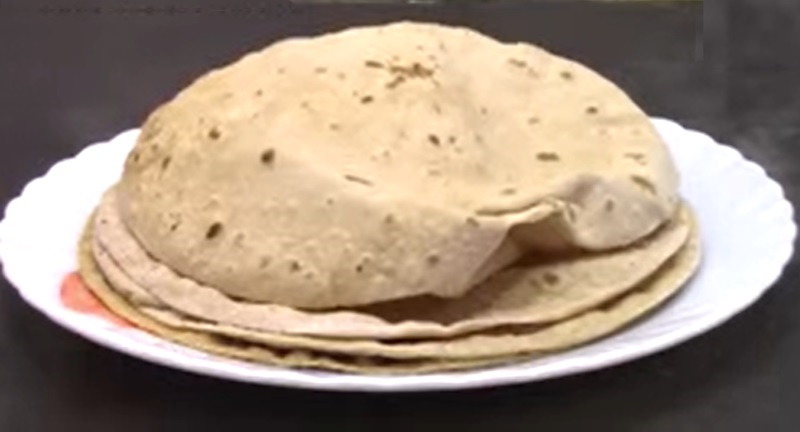
Roti or Chapati is an integral part of the food ethos of the Indian subcontinent. It is a simple yet delightful flatbread made from whole wheat flour. This versatile creation can be enjoyed with a variety of accompaniments or used as a wrap for curries and vegetables. To make it, whole wheat flour is mixed with water and a pinch of salt, resulting in a soft and pliable dough. The dough is then rolled into thin discs and cooked on a hot griddle until the Roti puffs up and develops golden brown spots, creating a tender, chewy bread with a subtle crispiness. Often served hot with ghee or butter, Roti takes on a heightened flavor and richness.
Naan
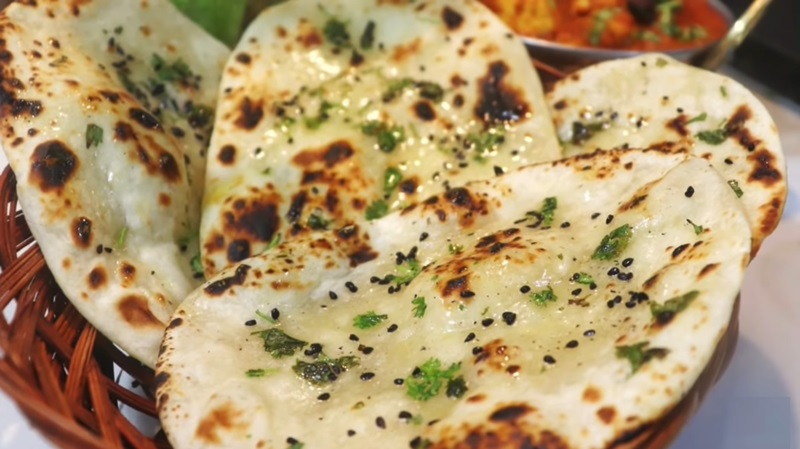
Naan is a delicious flatbread made with wheat flour, known for its soft and fluffy texture. It is best enjoyed when served hot and fresh. Naan is perfect for dipping into curries and other flavorful dishes, thanks to its slight chewiness. Traditionally, it is baked in a tandoor, a clay oven that imparts a unique smoky flavor. However, it can also be cooked on a stovetop or in a regular oven. The dough is made with flour, yeast, salt, sugar, and yogurt, giving it a tangy taste. Naan can be enjoyed plain or with various toppings and fillings. Popular variations include garlic naan, cheese naan, and keema naan, which is stuffed with spiced minced meat. Before serving, it is often brushed with ghee or butter to enhance its richness and taste.
Paratha
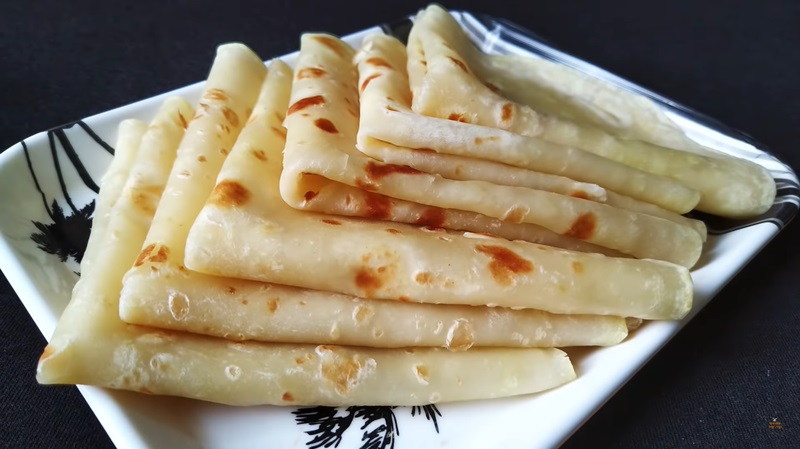
Paratha is a true gem in the tapestry of Indian cuisine. It is renowned for its rich flavors and diverse variations found across the subcontinent. The name "Paratha" is derived from "parat" and "atta," representing the layers of cooked dough. This flatbread is meticulously prepared by cooking whole-wheat dough on a tava, resulting in a flaky texture through a shallow-frying technique. Plain parathas are thick and hearty, while stuffed parathas provide a range of delightful options. The addition of spiced mashed potatoes (aloo paratha), cauliflower (gobi paratha), minced lamb (keema paratha), or dal enhances the spectrum of flavors and textures.
Similar to the lamination process of puff pastry, the layers in Paratha contribute to its uniquely flaky consistency. These delicious flatbreads are often enjoyed with white butter and paired with various accompaniments such as fried eggs, curd, mutton kheema, omelette, nihari, daal, jeera aloo, or raita. Whether it's for breakfast or any other meal, Paratha's versatility and countless stuffing options highlight the culinary creativity found in Indian cuisine.
Lassi
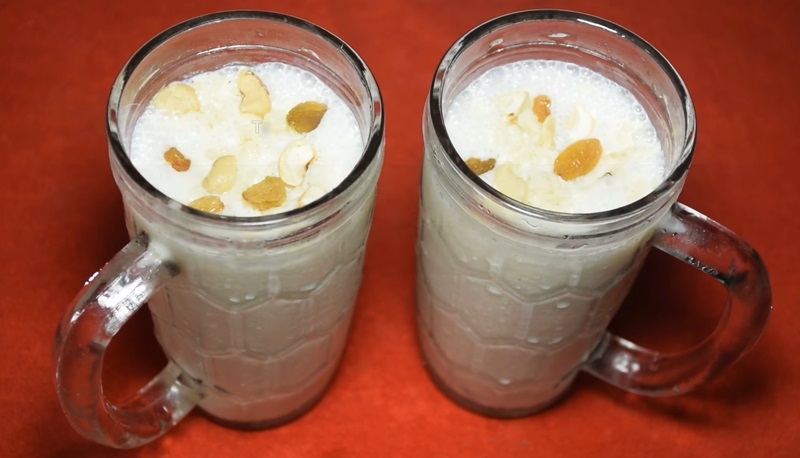
Lassi, a beloved and traditional Indian drink, is enjoyed by people of all ages. This invigorating beverage is created by blending yogurt with water and enriching it with a variety of flavors and spices for an enhanced taste. Served in a tall glass, lassi can be enjoyed on its own or alongside a meal. There are numerous types of lassi, each with its own distinct flavor profile. The most popular variations include sweet lassi, made with sugar or honey, and salted lassi, seasoned with salt and occasionally a touch of roasted cumin powder. Fruit lassi, such as mango or strawberry lassi, is also highly favored. Beyond its deliciousness, lassi offers several health benefits. It is a rich source of probiotics, which aid in digestion and bolster the immune system. The yogurt used in lassi is high in calcium and protein, making it a nutritious choice for a refreshing drink.
Raita
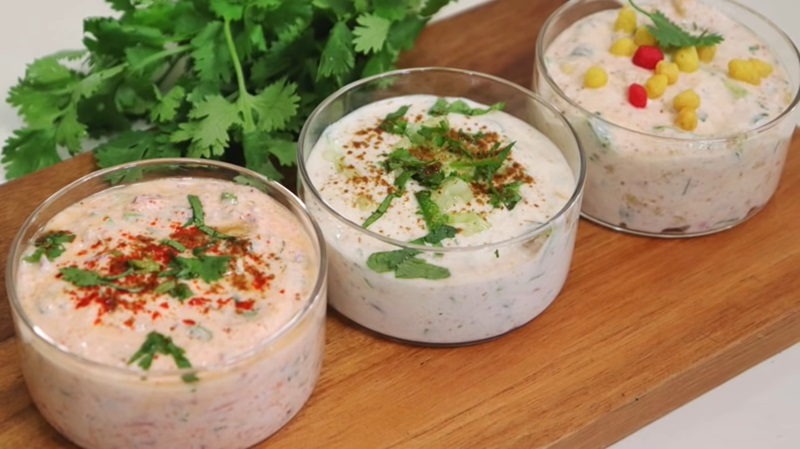
Raita is a popular side dish in Bengali cuisine, known for its refreshing and cooling properties. It is a yogurt-based dish that is usually served alongside main meals to balance out the spiciness of other dishes. Raita is made by whisking yogurt until smooth and then adding various ingredients to enhance its flavor and texture. The most common ingredients used in raita include chopped cucumbers, tomatoes, onions, and coriander leaves. These vegetables add a crunchy texture and a burst of freshness to the dish. To enhance the taste, spices such as roasted cumin powder, black salt, and chaat masala are added. Sometimes, a tadka (tempering) is also added to the raita, which includes mustard seeds, curry leaves, and dried red chilies, giving it a unique flavor. Bengali raita is a versatile dish that can be customized according to personal preferences. It can be made with different combinations of vegetables and spices, allowing for a variety of flavors. Whether it is served with biryani, pulao, or any other rice dish, raita adds a refreshing touch to the meal.
Saag
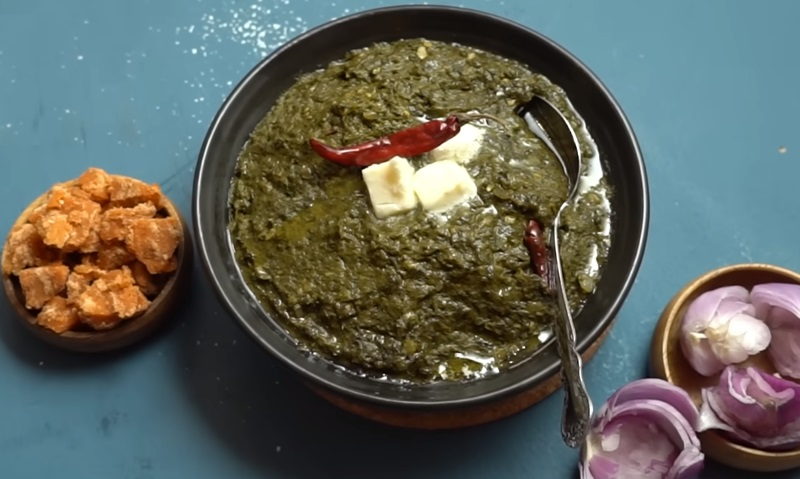
Saag, also known as sag or saga, is a leafy vegetable dish that originated in the Indian subcontinent. It is often enjoyed with bread options such as roti or naan, and in certain regions, it is served with rice. This dish combines a variety of greens including spinach, basella, finely chopped broccoli, mustard greens, collard greens, and other flavorful ingredients. The greens are skillfully mixed with a blend of spices and sometimes enhanced with ingredients like chhena.
Saag has gained significant popularity in India, especially in the state of Odisha, where it is traditionally served with pakhala. It is also offered as part of Mahaprasad at the esteemed Shree Jagannath Temple in Puri. In West Bengal and other North Indian regions, sarson ka saag or mustard plant leaves are a common preparation, often enjoyed with makki ki roti, a yellow flatbread made from maize flour. In the North Indian state of Punjab, saag gosht or hariyali maans is a beloved dish that combines spinach and mutton.
Some variations of saag may include paneer (Indian cottage cheese) or chicken for added protein. Across the border in Pakistan, saag is most commonly enjoyed in the Punjab province. Saag is not only delicious but also nutritious, making it a popular choice among vegetarians and vegans.
Aloo Gobi
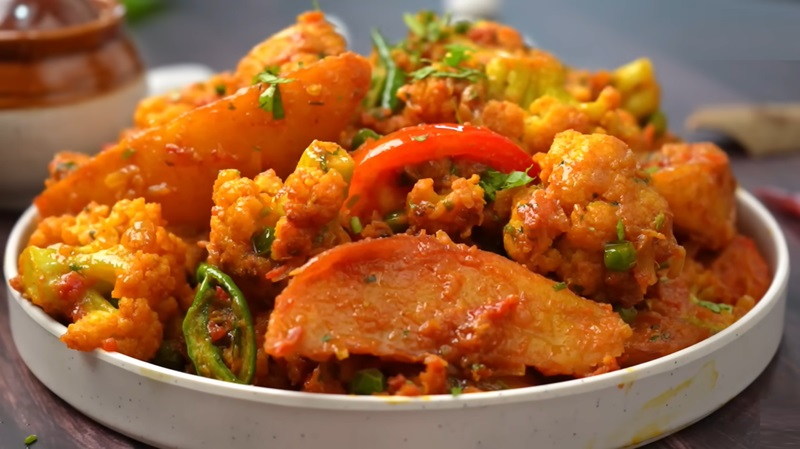
Aloo Gobi is a beloved vegetarian dish that originated from the Indian subcontinent. It combines potatoes, cauliflower, and a variety of aromatic Indian spices to create a harmonious blend of flavors. The dish is known for its vibrant yellow color, achieved by using turmeric, as well as the warmth of black cumin and the fragrance of curry leaves. Along with onions, garlic, coriander stalks, ginger, peas, tomatoes, asafoetida, black pepper, and cumin, Aloo Gobi is a flavorful masterpiece.
Originally from Northern India, Aloo Gobi has gained popularity throughout the entire subcontinent, including Nepal, Bengal, and Pakistan. Its widespread acclaim is due to its comforting and hearty nature, making it a staple in households and a symbol of the diverse and rich tapestry of Indian cuisine. The dish's versatility allows for various adaptations, each adding a unique twist while preserving its cultural roots.
Chole Bhature

Chole Bhature is a delightful dish that combines two main elements - spicy chickpeas called chole and deep-fried bread known as bhature. The chickpeas are cooked with an assortment of aromatic spices like cumin, coriander, turmeric, and garam masala, resulting in a flavorful and rich gravy. To enhance the taste, onions, tomatoes, ginger, garlic, and green chilies are added generously, imparting depth and heat to the dish. The chickpeas are simmered until they become tender, allowing the flavors to blend together harmoniously. On the other hand, the bhature are soft and fluffy deep-fried bread made from a mixture of wheat flour, yogurt, and a hint of baking soda. This combination creates a light and airy texture. The bread is fried until it turns a golden brown, giving it a crispy outer layer. Chole Bhature is often served with pickles, yogurt, and onions on the side, which not only enhance the overall taste but also provide a refreshing contrast to the spiciness of the dish.
Aloo Paratha
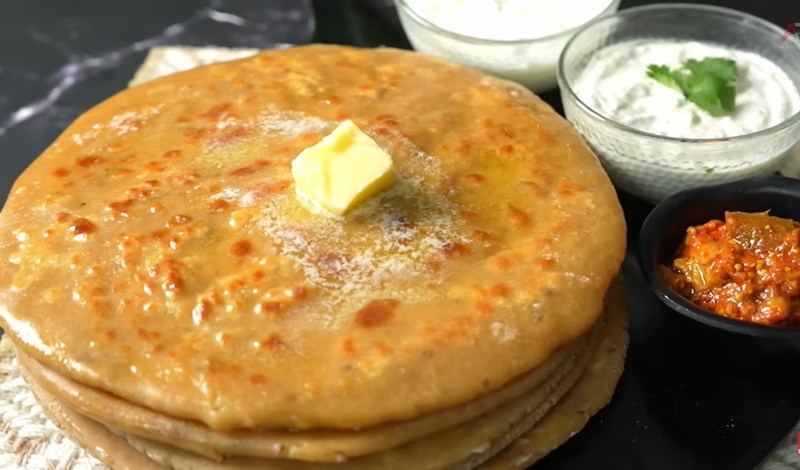
Aloo Paratha, a popular flatbread dish from the Indian subcontinent, is a delightful breakfast choice. Made with unleavened dough, this paratha stands out with its flavorful stuffing of mashed potatoes mixed with aromatic spices like garam masala and amchur (dried mango powder). The process involves rolling out the dough, filling it with the tasty potato mixture, and cooking it on a hot tawa with a generous amount of butter or ghee.
The combination of flavors in Aloo Paratha creates a culinary delight, often served with accompaniments like butter, curd, chutney, or a selection of Indian pickles. This wholesome and savory breakfast not only provides a satisfying start to the day but also showcases the rich culinary traditions of the Indian subcontinent, where each bite celebrates the region's diverse and aromatic spices.
Tahri
-1708682600.jpg)
Tahri is a beloved rice dish, known for its delightful aromas and vibrant colors. This one-pot meal combines fragrant long-grain rice with a medley of spices, vegetables, and meat, resulting in a satisfying and flavorsome dish. The rice is soaked beforehand to ensure a fluffy texture, and then cooked with an assortment of spices like turmeric, cumin, coriander, and cardamom, lending it a golden hue and a warm, earthy taste. The addition of vegetables such as potatoes, carrots, peas, and onions adds both texture and flavor, perfectly complementing the spices. For a heartier option, meat like chicken or beef can be included, allowing the flavors to meld together with the rice and spices. Tahri is a versatile dish that can be enjoyed on its own or paired with yogurt, pickles, or a salad.
Dum Aloo
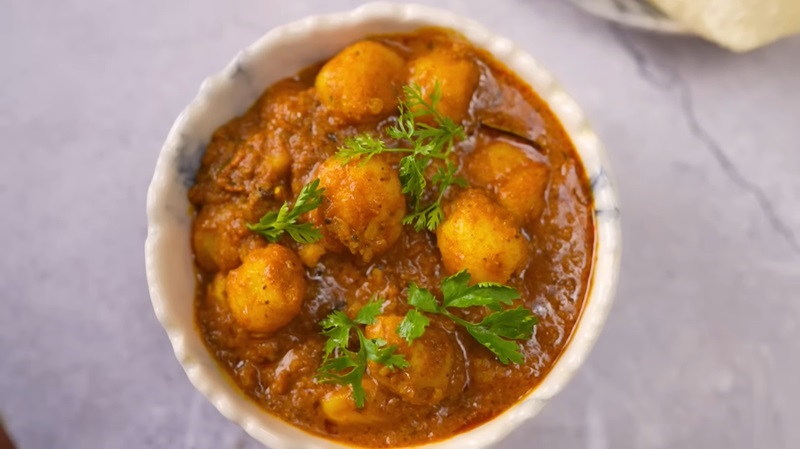
Aloo Dum is a popular curry dish that consists of fried potato cubes. To give the gravy a smooth texture, finely chopped or grated onions are added. The recipe also includes ginger-garlic paste, cloves, bay leaf, cardamom, and cumin seeds to create a flavorful profile. Instead of tomatoes, curd is used to thicken the gravy and add a subtle sourness. The spiciness is enhanced with red chili powder, coriander powder, and roasted cumin powder. Traditionally, this Aloo Dum is served generously over soft Dahi bara, accompanied by ghugni, resulting in a delicious combination.
Bhurta
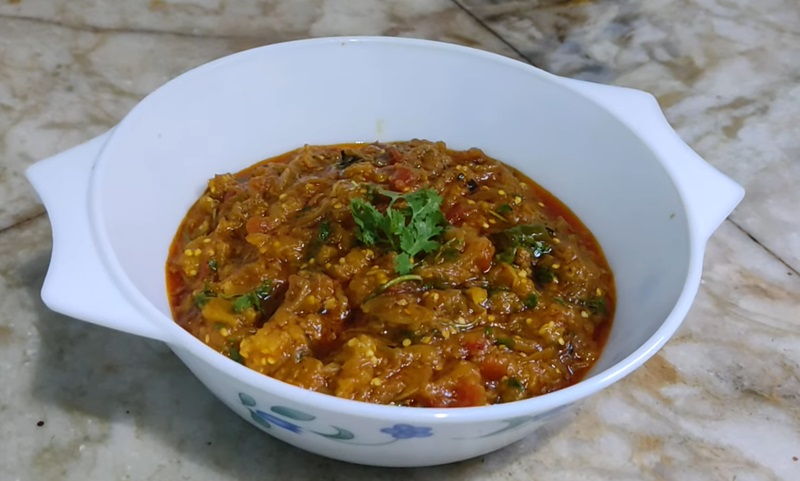
Bhurta is a versatile dish that can be made with a variety of vegetables, but the most common ones used are eggplant, potato, tomato, and pumpkin. To prepare Bhurta, the vegetables are first roasted or boiled until they are soft and tender. Then, they are mashed or finely chopped and mixed with a blend of spices and herbs. The spices typically used include mustard seeds, cumin seeds, turmeric powder, red chili powder, and garam masala. Fresh coriander leaves are often added for an extra burst of flavor. The dish is cooked on a low flame, allowing the flavors to meld together and the spices to infuse into the vegetables. It is usually served hot with rice or roti (Indian bread). Bhurta has a rich and creamy texture, with a combination of smoky and tangy flavors. Bhurta is a popular choice for vegetarians and is widely enjoyed as a side dish or a main course.
Gajorer Halua
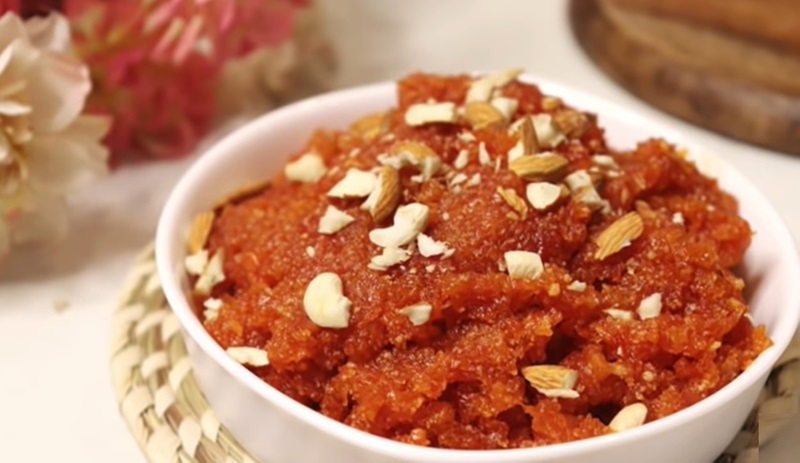
Gajorer Halua or Gajar Halwa is a dessert that is widely loved for its rich taste and vibrant colors. It is made from grated carrots, ghee (clarified butter), sugar, milk, and aromatic spices, such as cardamom and nutmeg. To prepare this delectable dish, the grated carrots are first cooked in ghee until they release their natural sweetness and turn tender. Then, milk is added to enhance the creamy texture and enrich the flavor. The mixture is gently simmered until the carrots are fully cooked and the flavors are well incorporated. Finally, sugar is added to sweeten the halua to perfection. The result is a luscious, melt-in-your-mouth dessert that is known for its delightful orange hue and irresistible aroma. The combination of the naturally sweet carrots, ghee, and aromatic spices creates a harmonious blend of flavors that is both comforting and indulgent. Gajorer halua is often garnished with a sprinkle of chopped nuts such as almonds or pistachios, adding a delightful crunch to every bite. This dessert is enjoyed on special occasions, festivals, and family gatherings, where it is served warm or at room temperature.






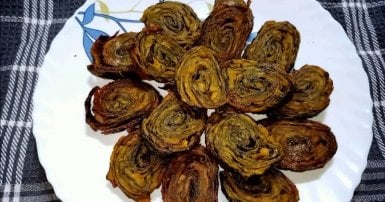
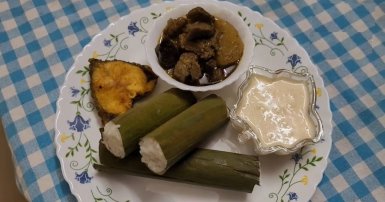
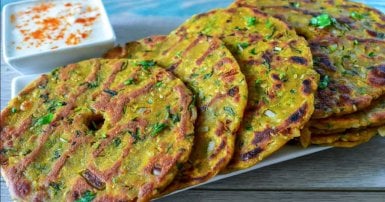
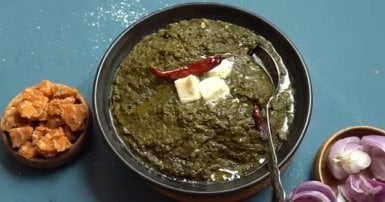
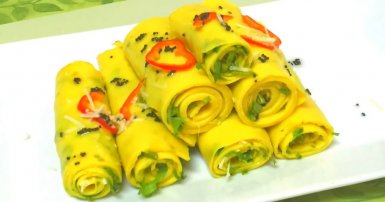
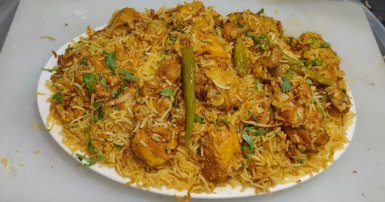

-1709813013.jpg)


